Birding in West Sikkim
- With JungleHike Tours
- May 2 to 8, 2025

About the Trip ...
Since I started my birding trips in 2018, Sikkim has always been on my agenda. I had heard about the bird diversity of that state. Before we get into trip details, let’s understand a little bit about the state's geography.
In general, the state is divided into 3 parts. East Sikkim, which borders Bhutan, West Sikkim, which borders Nepal, and the high-altitude North Sikkim, which borders China (some parts of it also touch Nepal). Most of the state has hilly regions with some high-altitude snow-clad mountains. Many scenic locations all through the state are thronged every year by tourists.
Last year in January, I visited East Sikkim for birding. Winters there are generally harsh, and we suffered because of the rain/snowfall. We had visited Pakyong area, but could not reach the famous Silk Route destination of Dzuluk. The roads there had dry ice, which made driving impossible (the road became slippery and made it difficult to drive on it).
This year, Avinash (JungleHike proprietor) had arranged Sikkim birding in May, and although he had plans to visit East as well as West, I chose to go for West Sikkim only.
Day 1: Travel to Okrey
I started from Home on the 1st of May, just before midnight, as my flight was scheduled for 2:45 am.
(Every time I travel at such odd hours, I curse myself for booking such flights that disturb my night sleep completely. There, I decide to never make such a mistake again. But when I look for flight details for a future trip, the exorbitant ticket costs again make me zero in on such odd-hour flights, that too with a stopover. So the cycle continues 😟).
My flight to Bagdogra included a stopover at Hyderabad. Had to spend 4 hours there, but somehow I did not opt for the airport lounge (lack of sleep may have disturbed my rational thinking). To add to that, my water bottle leaked at the airport, spilling some water on my camera bag. Thankfully, it had not reached my camera equipment.
The flight from Hyderabad started almost an hour late (for no apparent reason, there was no announcement, bad weather, nothing). I finally reached Bagdogra at 11 am. There was one more participant, Smita Gupta, who was already waiting at the airport (her flight was from Delhi).
We then managed to find our vehicle driver, loaded our luggage, and started our road journey. But wait, the exit at Bagdogra airport is never smooth. The exit gate is small, and all the vehicles try to go through it at the same time, making a huge mess; there is just no easy way out.
From there, we started towards a restaurant in Melli. It was the meeting point, where we would be meeting Avinash and the other participants who had just completed their East Sikkim birding. The distance was about 70 km, but due to roadblocks (road construction work blocking one-sided traffic) and traffic through Siliguri city, we reached the spot only by 2:45. Others had finished their lunch and were waiting for us (one of their vehicles was going back, so those occupants and their luggage was to shift to our vehicle). By that time, I was so hungry, that I just grabbed a chair and had the Veg Thali without even greeting our fellow birders.
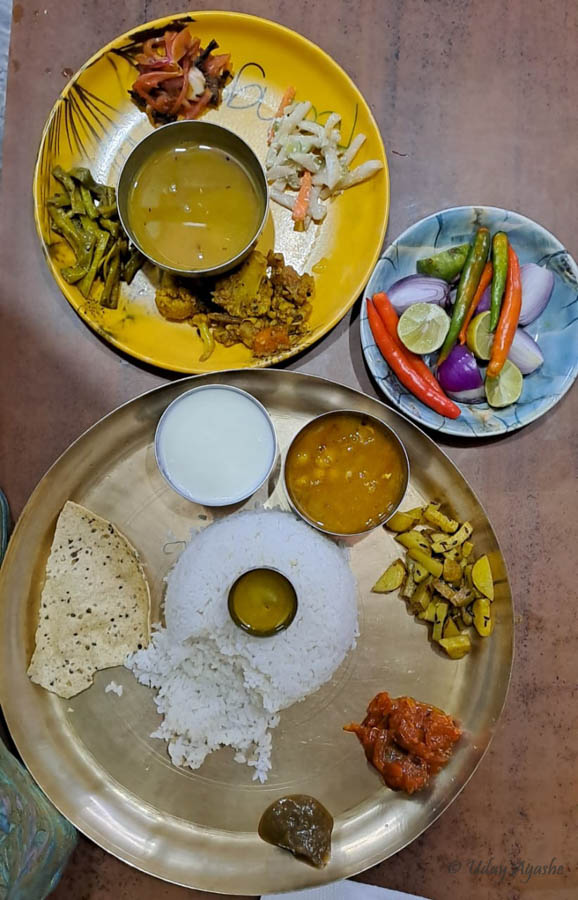
By the time we had our lunch, the luggage shifting was in place, and I was once again with Mr Rai (our resourceful driver, who was also a keen birder and was carrying his DSLR with him too). We had the company of Nita and Shyam Potnis, both experienced birders we have done many trips together.
The other vehicle participants were Amos (our other driver), Smita, Avinash (our tour leader), Anju mam (I had recently done a Sattal trip with her ), and Shiva sir (a seasoned birder from Mysore, I had the pleasure of his company in Arunachal Pradesh birding tour in year 2022 - https://agashe.in/blog-2022-03-mishmi.php).
Around 3:30, we started our journey. We had to cover another 70-odd km. The road to Jorethang town was good (narrow but decent otherwise). We then had a quick tea break at Jorethang. From there on, the road condition was really bad. It was getting dark by then, and the drivers were not sure about the road to take (Google Maps may not be of much help in this region, as we realized later). Asking for directions on that lonely road wasn’t an easy task either, but a fellow tempo driver helped us reach our destination a little after 7 pm. Considering the hilly roads, I had already taken my motion sickness medication, and with that, I slept all through that treacherous journey.
As we got down, nothing was visible in front of us, but then from nowhere our homestay owner appeared and he took us down a slippery path (some 200 feet down where our Homestay was). Fortunately, we had help in getting our luggage.
The structure looked nice and cozy, but our particular room (Shiva sir was with me) was a little difficult to reach. To reach the first floor, we all had to crouch down while taking the steps (because of the low ceiling). After that, only our room was on a makeshift second floor. Here, the steps were even more tricky. Not just a low ceiling, but now we also had to maneuver the narrow steps. We had to be extra careful not to fall from those narrow-slippery wooden steps. The room size was decent, it had 2 queen-size beds, wooden floors, as well as wooden walls providing good insulation against the cold (Just the bathroom door was too narrow).
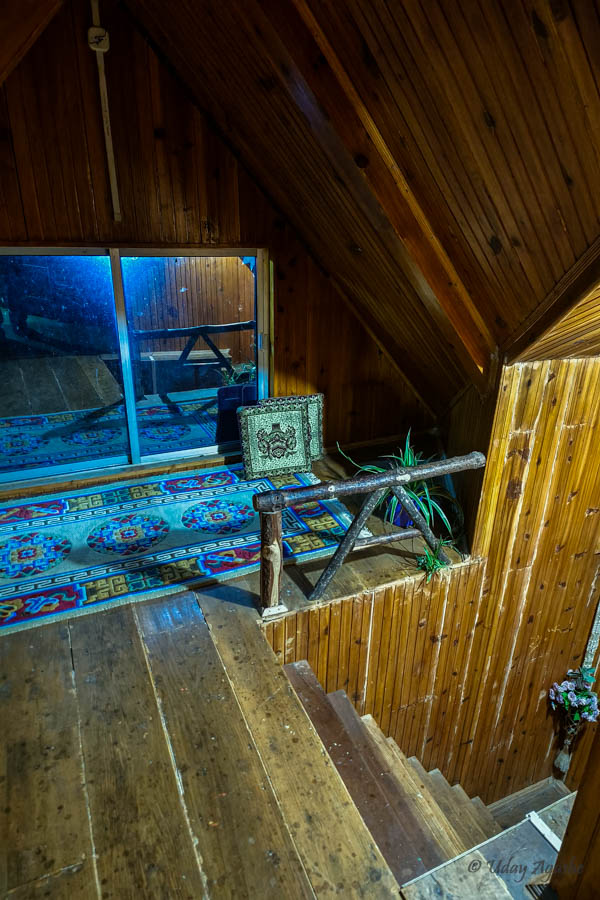
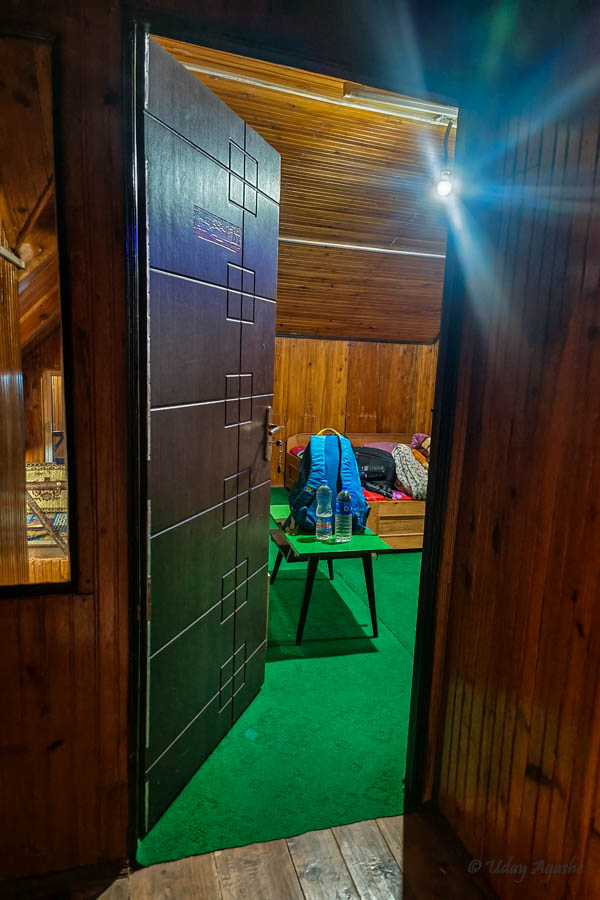
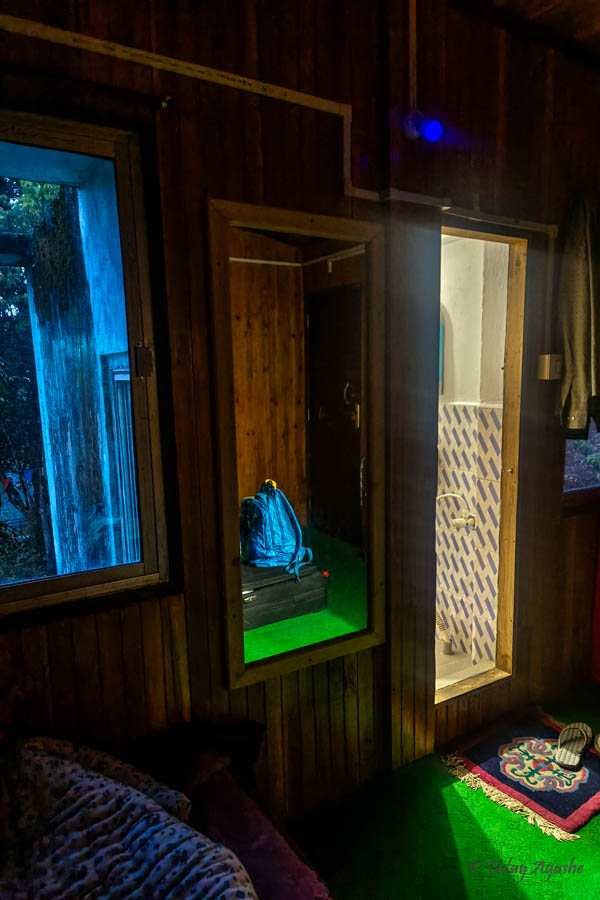
We quickly changed and were back on the ground floor for dinner. Our hosts were a lovely couple who helped us get comfortable there. Even the food was good (simple, local food and it was always freshly made)
I had spent almost an entire day traveling, and I was so tired that by 9 pm I was fast asleep.
Day 2: Birding Around Okhrey-Hilley
We began our day early. A quick cup of tea (thanks to our hosts), and we were out by 5:30. Our homestay owner had already talked with the authorities and had kept the sanctuary entry open (the entry gate, where we had to take the tickets, generally opens late but that would have meant losing precious birding hours)
Our homestay was at an altitude of about 7500 feet. The inner gate to the Rhododendron sanctuary (from where the walking trail starts) was some 500 feet above and roughly 8-10 km distance. Today, we decided to spend the morning session on this road going up to the main gate. We had kept both vehicles with us. So every few meters we would get down, walk and search for birds, travel some distance in the vehicle, and this kept repeating!!
The jungle all around was dense and lush green. It also had some bamboo patches perfect to see the parrotbills. But this habitat was also good for the Red Panda, although that is extremely elusive.
At our first stop, Avinash pointed us to a small bird with an orangish cap (there were 3 of them in fact). I just managed to get a quick photo before they decided to vanish into the deeper jungle away from us. All through the patch, we were able to hear the various cuckoo songs. With the help of Avinash and Shiva sir, we could differentiate the calls of the Indian Cuckoo, Eurasian Cuckoo, and the Large Hawk Cuckoo. The Himalayan cuckoo was also calling in between. A couple of years back, my friend Clara had taught us a quick trick to identify between the Indian and Eurasian cuckoos. If you have the typical cuckoo clocks, they sound like “Cuck ….. coo” which is what the Eurasian Cuckoo calls. But the Indian one gives a double call like “Cuck .. coo .... cuck ..coo” (somewhat like saying Kaka – Kaku – terms typically used to address uncle-aunt in Marathi… so being Indian, it calls Kaka-kaku and Eurasian sticks to Cuck coo.. easier to remember that way).
The cuckoo sounds were loud, but finding their location wasn’t an easy task. Occasionally, we could see one, but getting a photo from that distance was difficult. In the Eastern regions, the sun rises early, so as such it was daytime when we started at 5:30, but because of the fog, the visibility wasn’t that good.
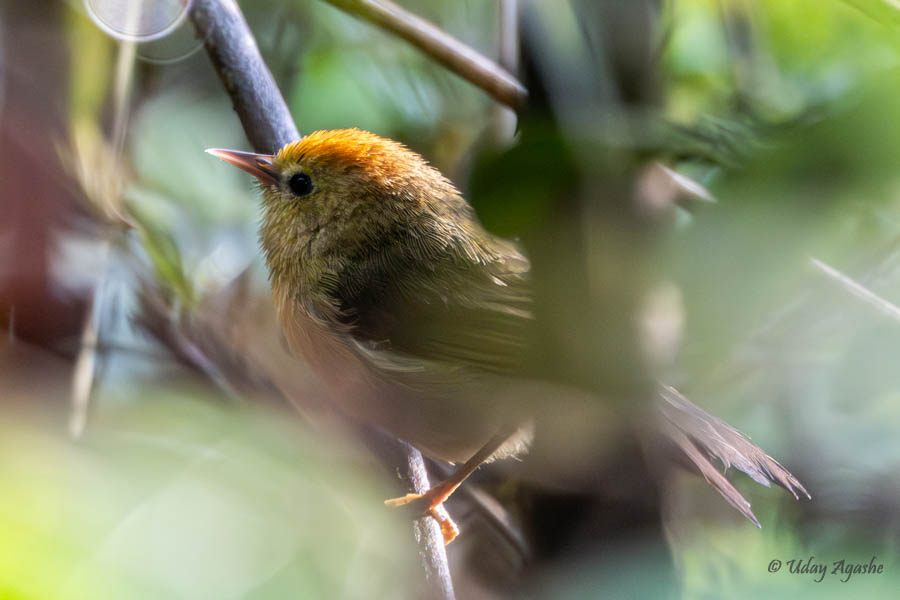
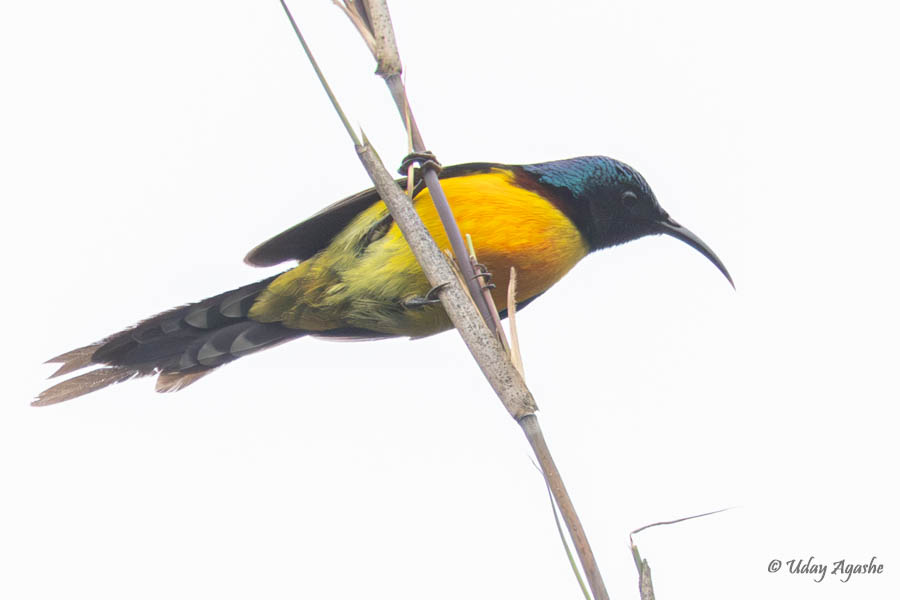
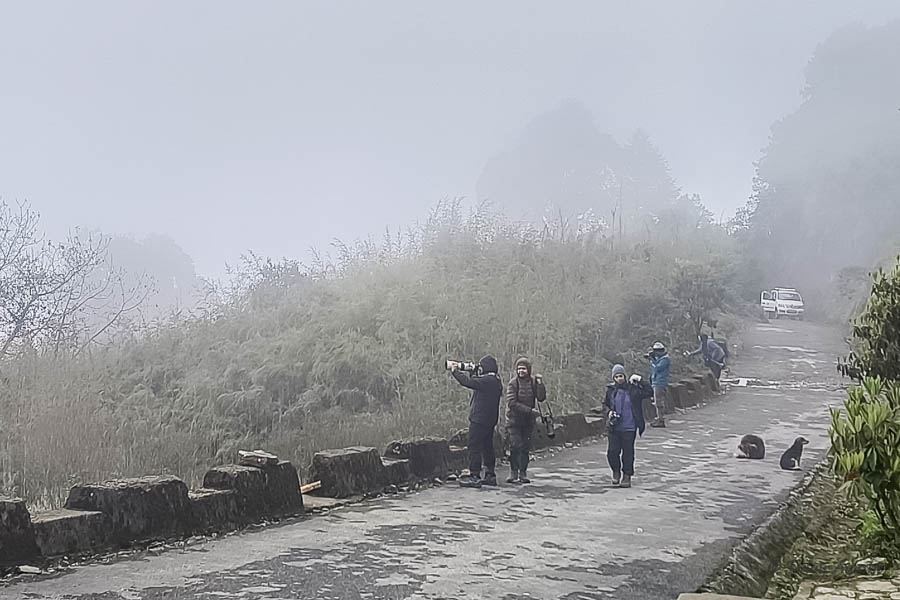
We kept going up the hill and found a few more birds on the way. The Oriental turtle doves were seen in large numbers. Besides that, we could also catch the Green-tailed Sunbird moving actively in he flowering trees. There were a couple of Sclay Laughingthrushes that crossed the road in front of us, thereby allowing us some photo opportunities.
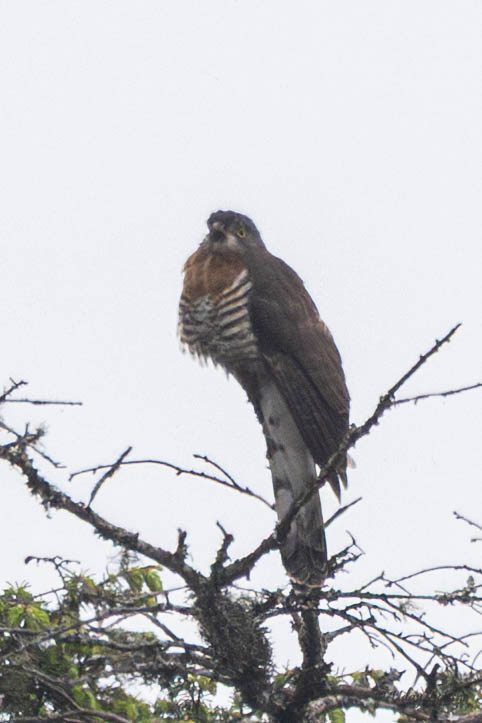
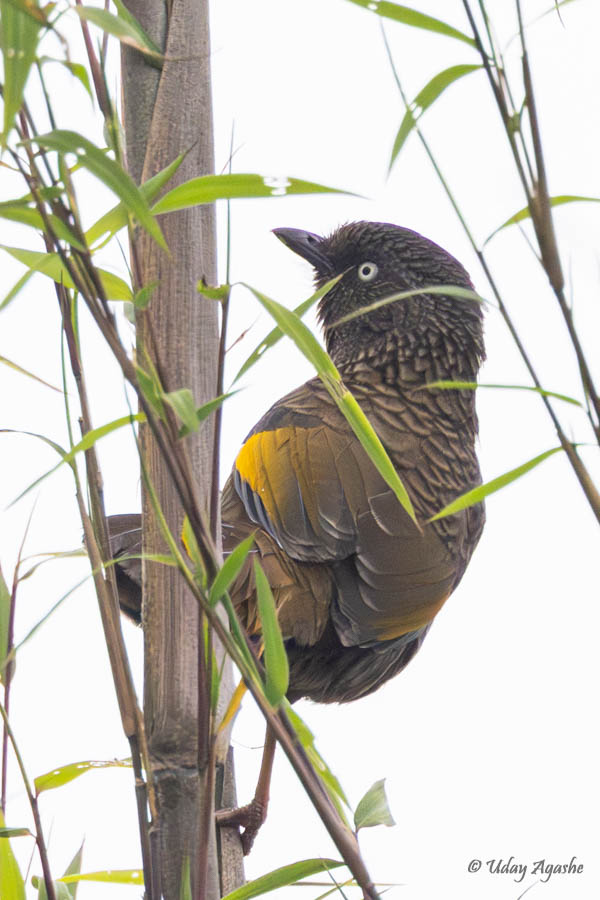
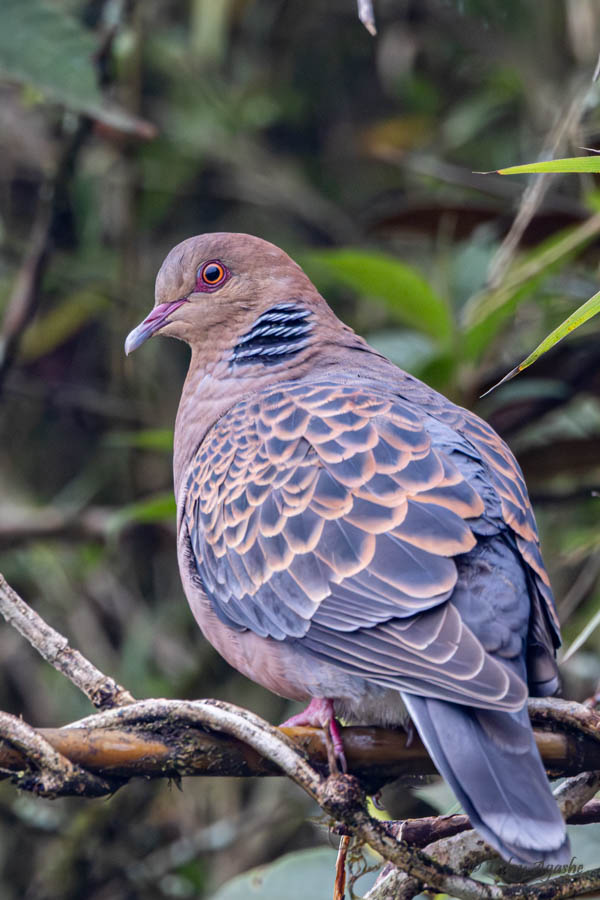
By around 8:30, we were near the main entrance, from here we were planning to take the walking trail towards Barsey, and that meant we had to park our vehicles there. But before that, we decided to have a quick breakfast at the only joint that was available there. It was a small, ill-lit place, but inside there was enough space for all of us to sit and enjoy our Maggi. They even had hot milk tea.
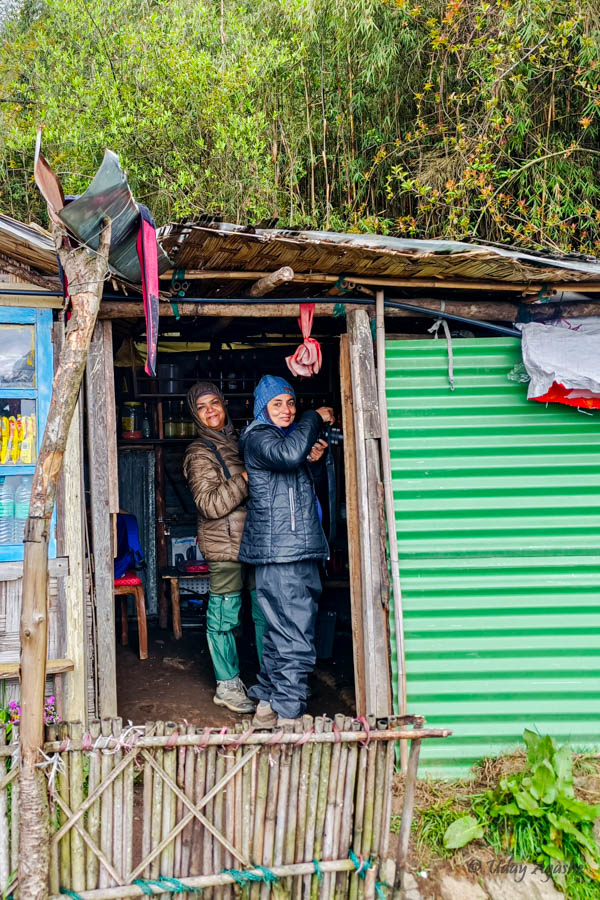
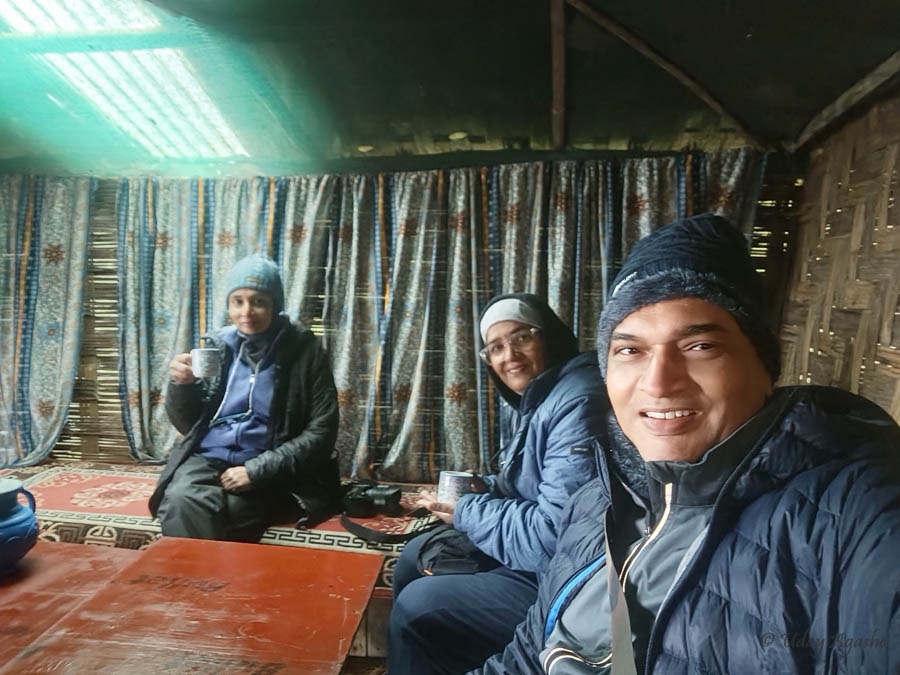
After that timely break, we started on the walking trail. We intended to cover the 5 km long trail up to Barsey, but that would have taken at least 5-6 hours (considering the birding involved), and hence we decided to do that on the next day. So today, we decided to cover a short distance on the trail. Sharing here the map of the trail for reference. As can be seen, the overall trail is long and trekkers can even reach Darjeeling via this route (there are multiple camping spaces planned at various joints).
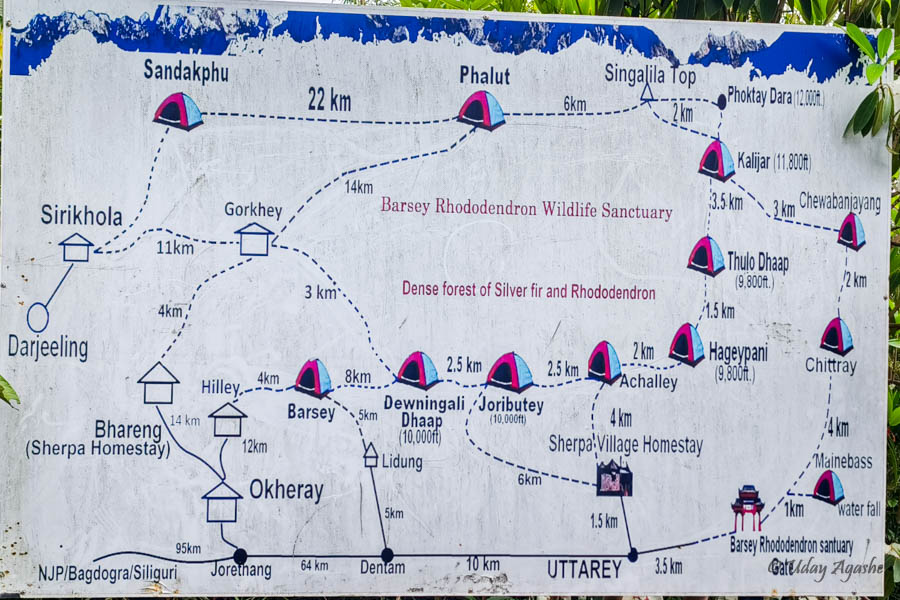
Just as we took the initial stairs, we could hear the calls of White-browed Fulvettas, they were in good numbers, and were not very far from us. As we looked closer, we could also see the Chestnut-headed Laughingthrushes foraging near the garbage dump. The long-tailed, Yellow-billed Blue Magpie was also there to welcome us.
The trail pathway looked to be well-maintained. Wide enough for 2-3 people to walk together, and most of the slopes are gradual. Just as we walked a few meters, Avinash could sense the activity of the Scaly-breasted Cupwing. This one prefers to remain hidden inside the bushes (skulker), but we could observe its activity with the help of binoculars. A little later, another shy bird greeted us. But this time, we were fortunate to get it in the open. The Rufous-throated Wren-Babbler allowed all of us some nice photos.
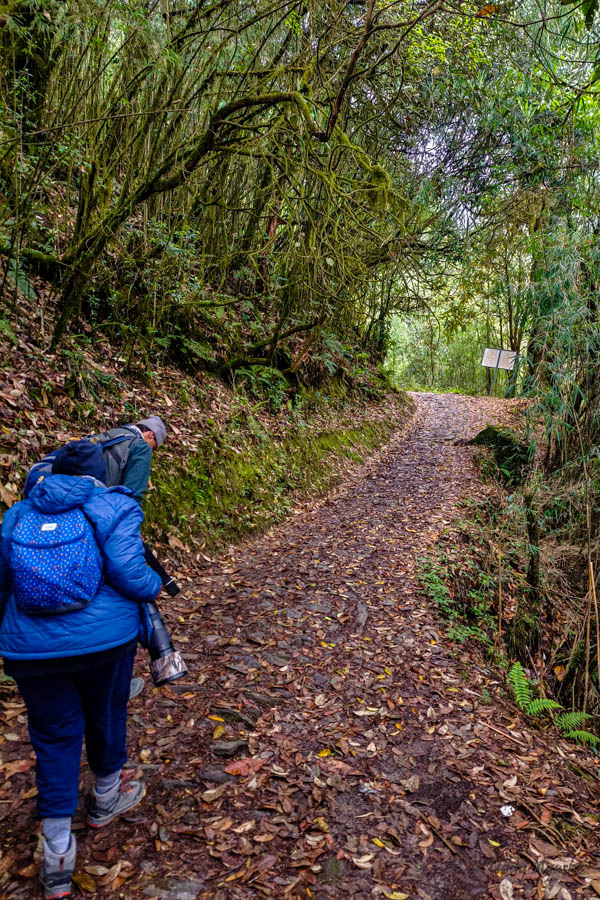
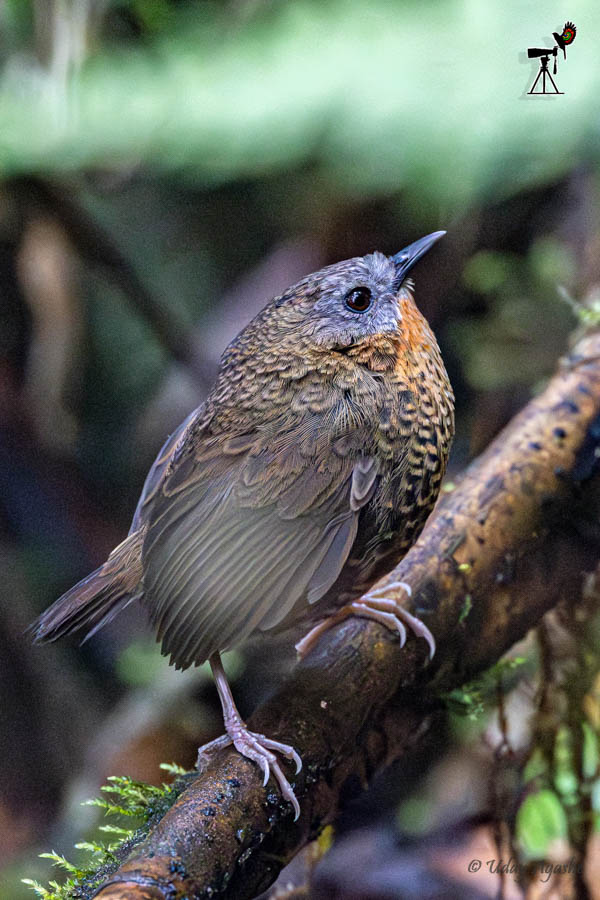
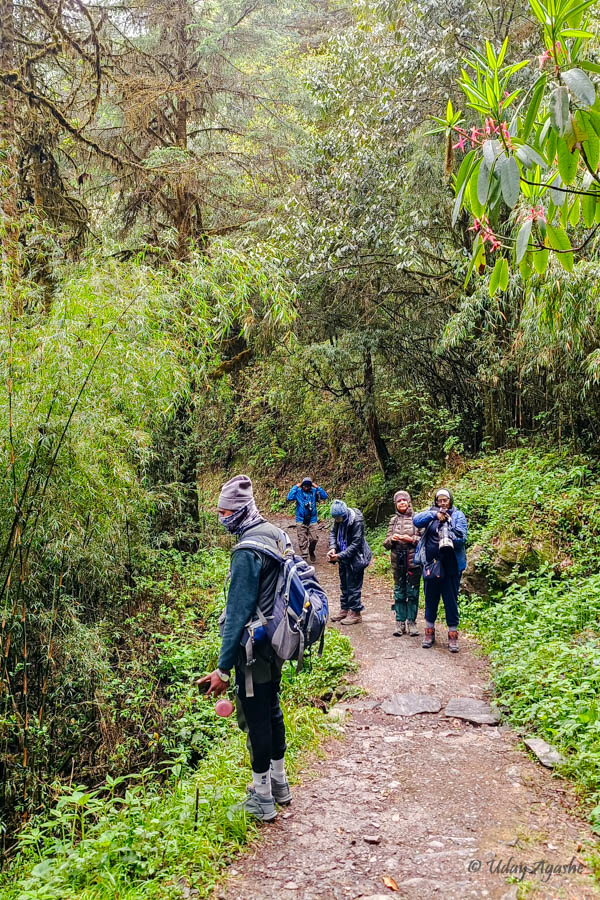
Due to the rains (from the last few days), the path was slippery in some places, so we had to be a little careful, but other than that, we all enjoyed the walk. The jungle was beautiful, and the weather was pleasant too.
As we turned at one corner, we could all hear the calls of a woodpecker. Avinash helped us with the identification of the Darjeeling woodpecker. With some effort, we even managed to locate its position.
We walked for close to a kilometer on the trail and decided to turn back. The weather by then had become cloudy, so the bird activity was reduced considerably.
At the entry gate, we again saw the Laughingthrush, and this time we managed to get a photo too.
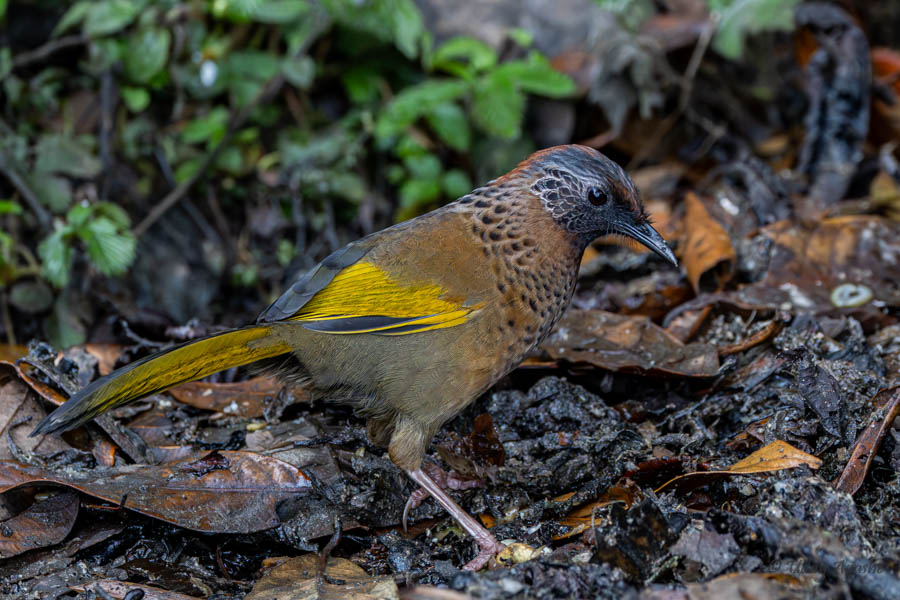
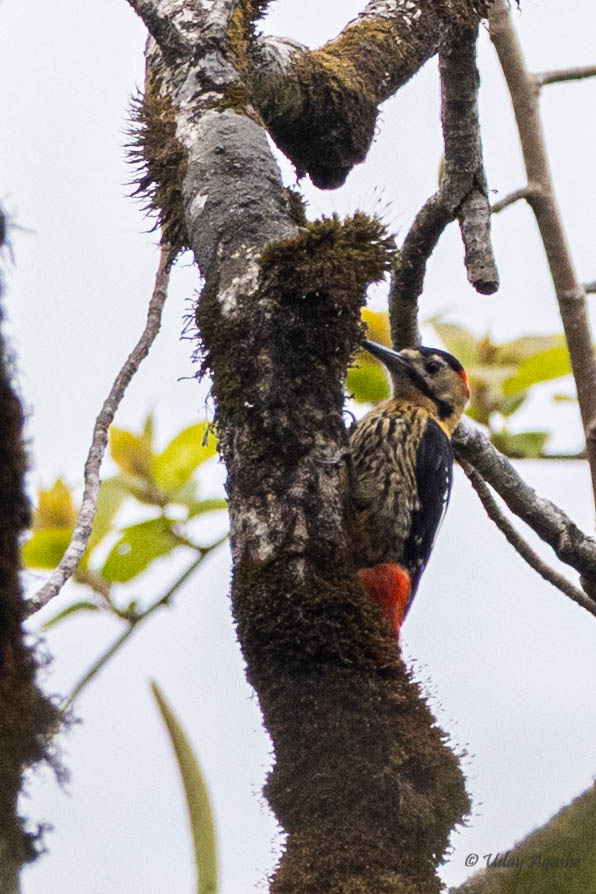
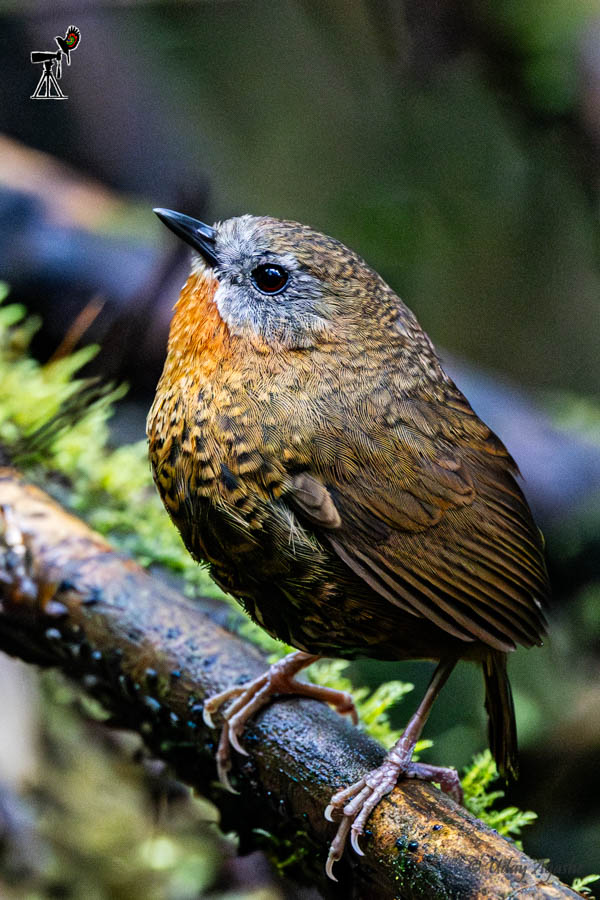
By the time we came down, it was nearing noon. But instead of directly going to the Homestay, we decided to give another go at birding. Our primary target was the Great Parrotbill. As we were actively searching for it, Avinash heard the calls of the Brown Parrotbills. The calls were coming from below the valley, but soon, we could see some activity behind the pine trees. As we were getting ready with our binoculars and cameras, one individual decided to come out on the nearby bamboo. With a little more patience, we got some decent photos of the bird. We waited for more than an hour, but there were no signs of the Great Parrotbill.
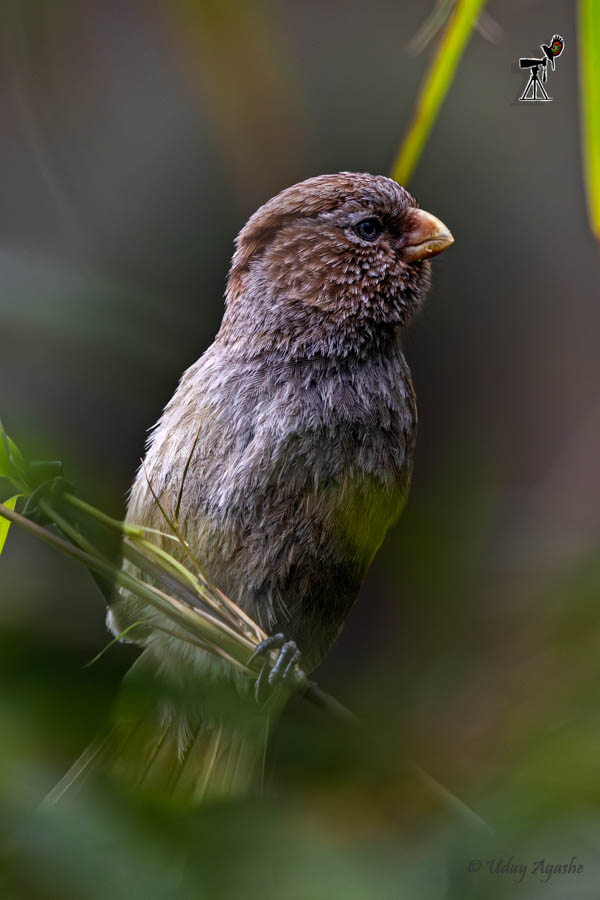
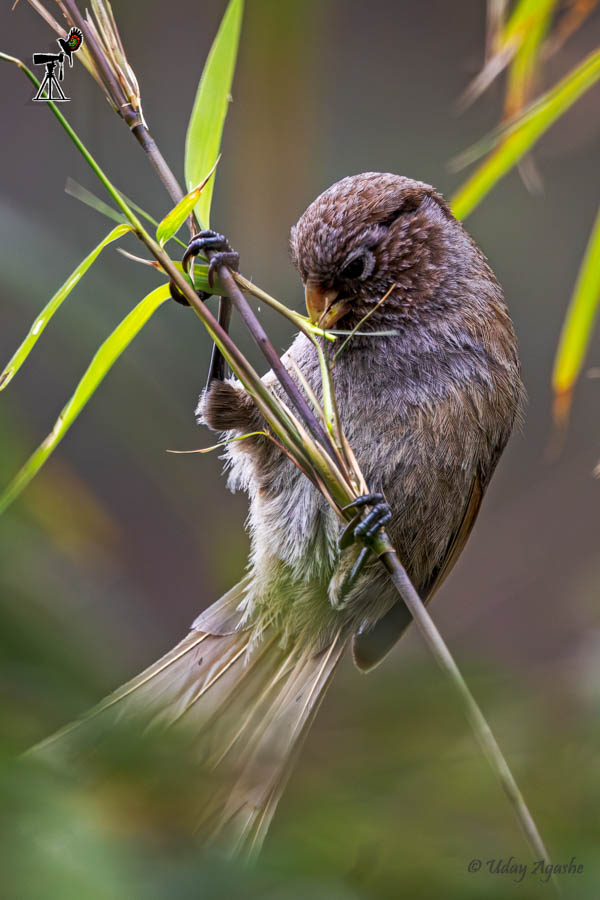
By 1:30 pm, we were back at our base. This time, we could see the building in proper light. It was nicely maintained. The central building had our rooms, and the structure on the left is where our hosts were staying. There were more rooms/ tents on the left, but those were unoccupied.
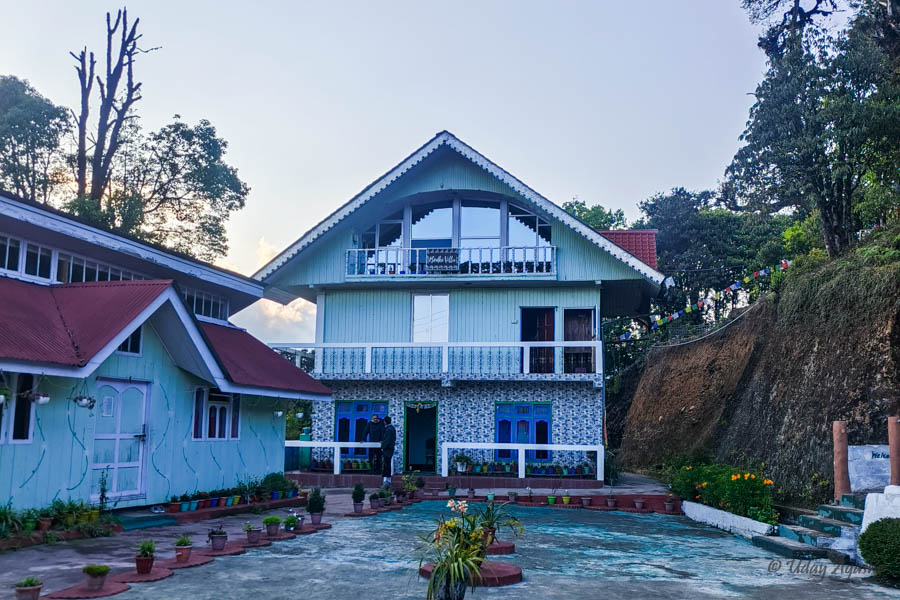
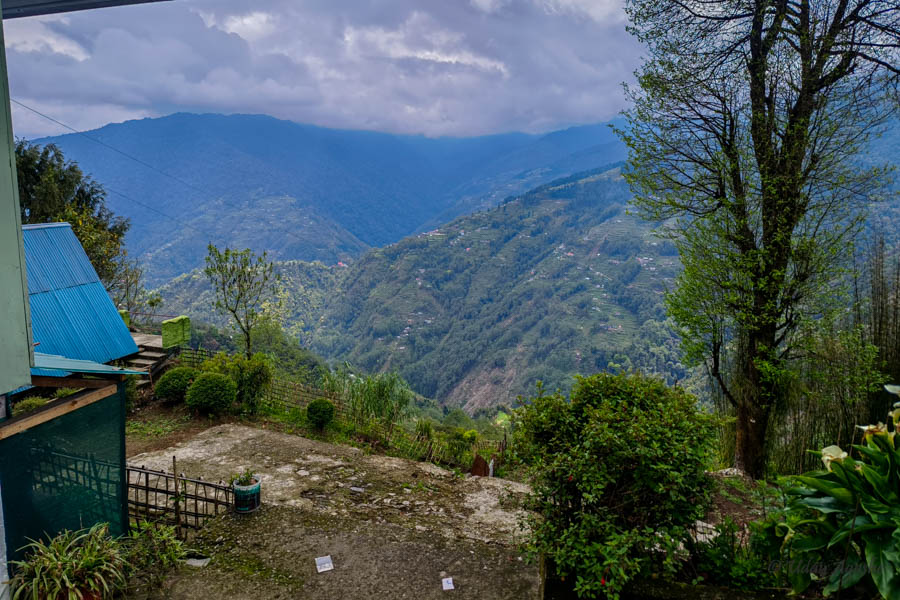
We were there by 1:30 and had just enough time to have lunch before we were out once again at 3.
For the evening, we planned to explore the area around Okhrey village. This habitat was a little different as there were human habitations around. All through that evening, we could hear the loud and continuous calls of the Great Barbet. This is a very common call across the Himalayan jungles during the season.
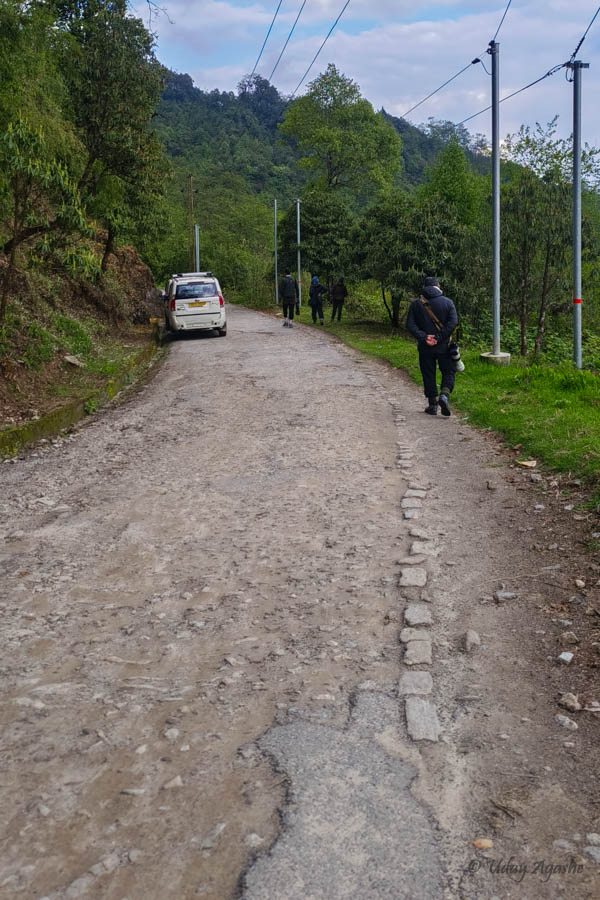
The bird activity around the houses was limited, so we waited at relatively secluded spots and managed to see a good number of birds throughout. This time we got to see the Eurasian Cuckoo more easily (its calls made it easy to identify). On one of the moss-laden trees, we could see some activity on the trunk. Close inspection revealed the movements of a treecreeper. These tree-creepers move vertically on the trunks (most going from bottom to top, foraging insects hidden in the bark). We were also greeted by the calls of a pair of Rufous Sibias nearby.
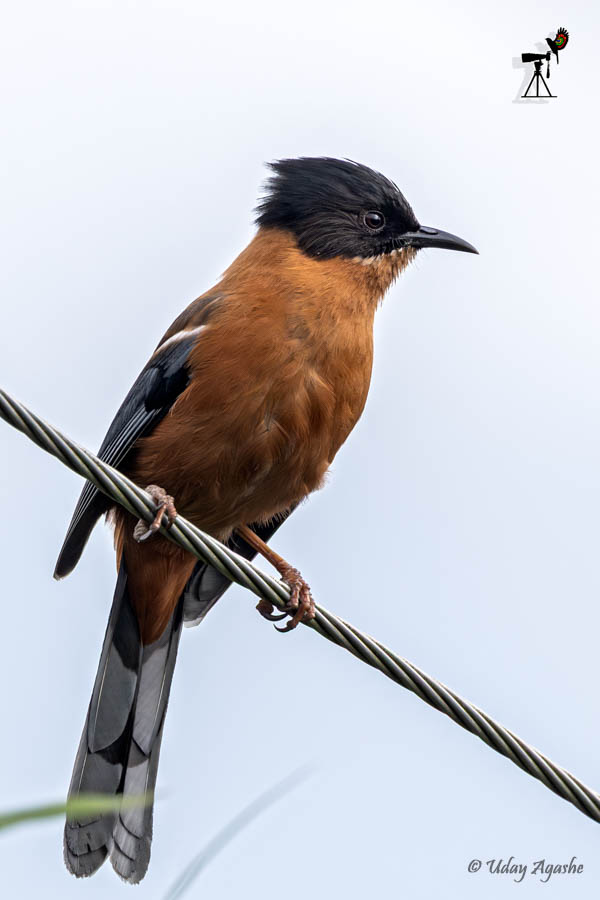
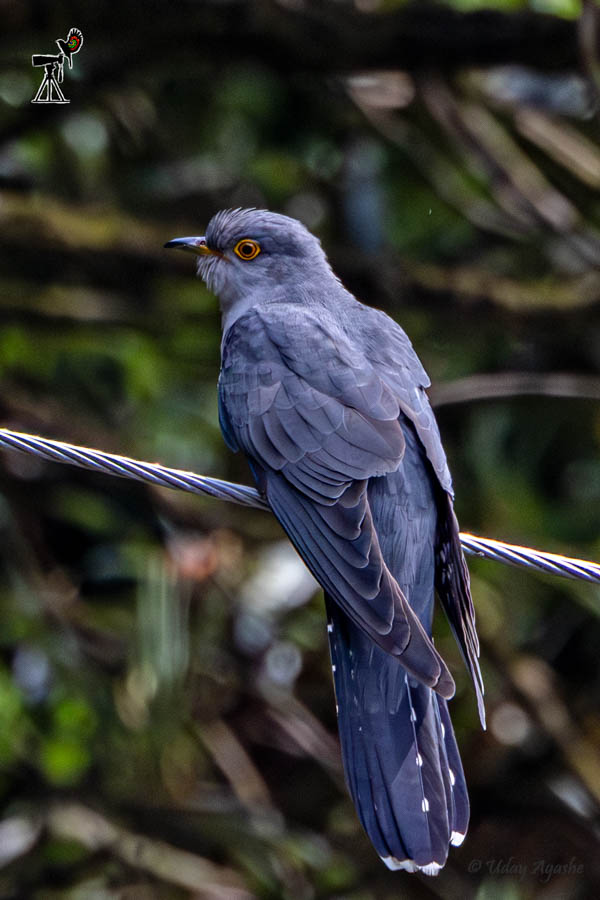
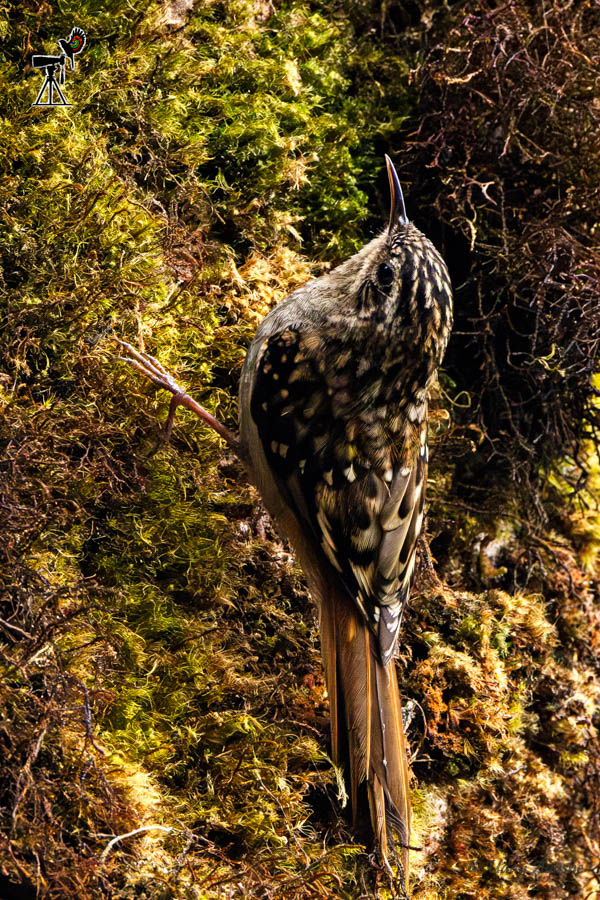
We covered about a 10-odd km distance in the next couple of hours (mostly in the vehicles, otherwise walking). Managed to see the Grey-headed Canary Flycatchers, a few more cuckoos, the Rufous-bellied Niltava, Golden-breasted Fulvettas, Rufous-capped Babblers, many varieties of warblers, and a few others, though could not photograph all of them.
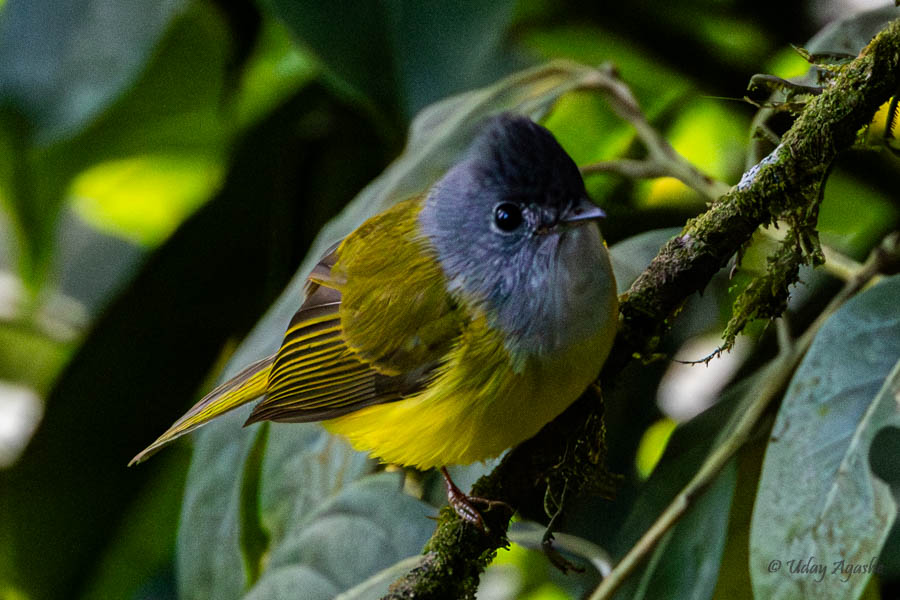
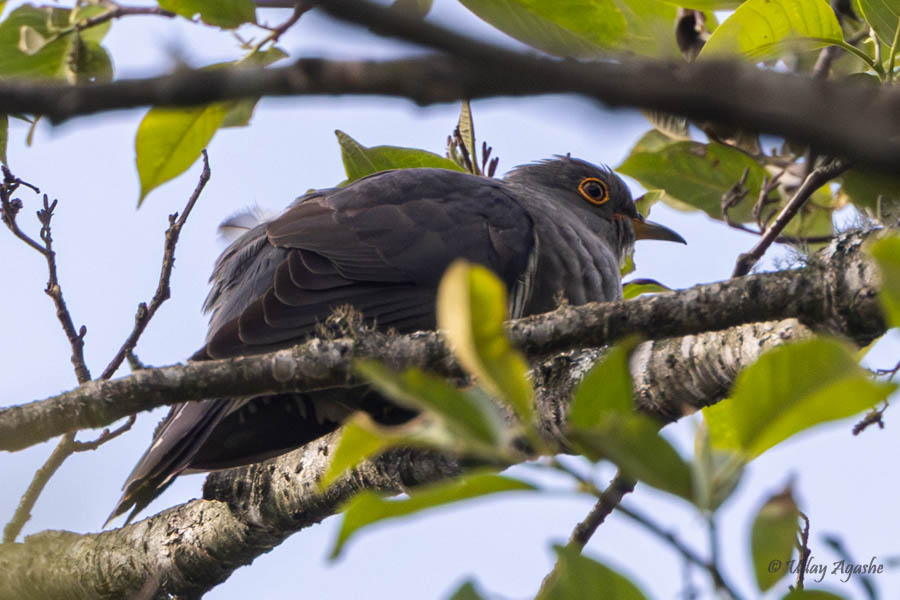

By evening, we were back at base, sipping a nice hot cup of tea (and coffee for some). Over tea and snacks, we discussed the day's progress and also talked a bit about tomorrow’s trail.
Dinner was at 8, and after dinner, we sat down for the end-of-day mandatory task of JungleHike birders (noting down all the species that we saw/observed during the day and some questions/queries related to that).
For tomorrow, both Nita and Shyam were recovering from flu infection, and they decided not to join the strenuous trail. Even Anju ma’m opted out of it. The remaining 4 of us had our task cut. We had to start at 5 am with a packed breakfast (because we expected to be back from the trail, only at lunch), and we had to also carry enough drinking water with us as there was nothing available once inside the jungle.
For those not joining the trail, they could have a relaxed start at 6.
Day 3: Can we get the Tragopan today?
We were all ready by 5; all excited and charged up with the expectation of sighting the Satyr Tragopan. Although not a guarantee, Avinash had high hopes about finding it on the trail today.
Before reaching the starting point, Avinash saw the Ashy Wood Pigeons from the moving vehicle. There were 3 of them that we could see through the leaves (there must be more birds as they generally remain in a large group).
With clear skies, the weather looked better today. Although the jungle here is very dense, we expected to have better photos because of the light. At the entrance, we were once again welcomed by the White-browed Fulvettas.

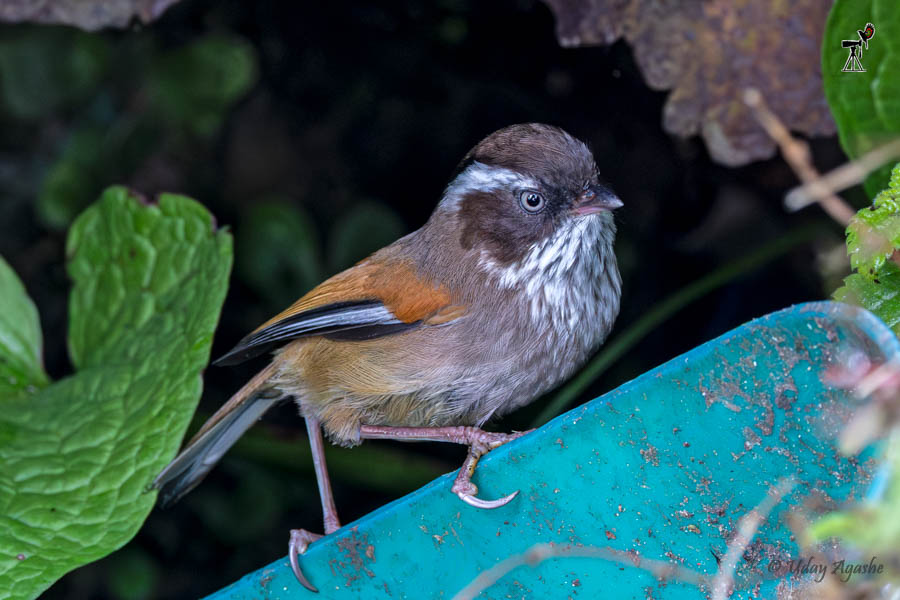
The moment we started on the trail, the jungle became very dense, and there were a few bamboo patches too. But to our surprise, there was hardly any bird activity today. For a long time, we did not even hear any calls. All through, Avinash was intently listening to even the faintest of the calls. Today, there were not many trekkers on the path, so it was entirely quiet.
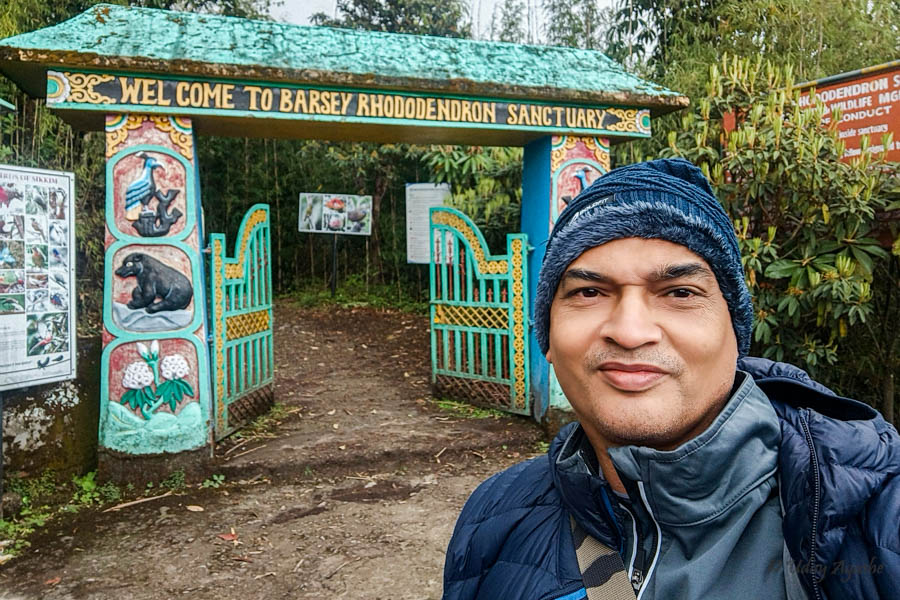
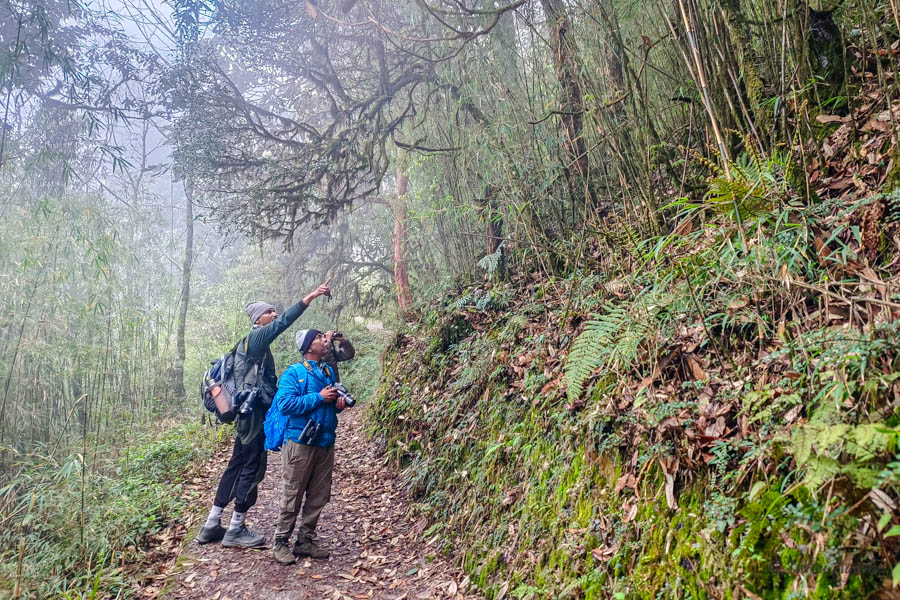
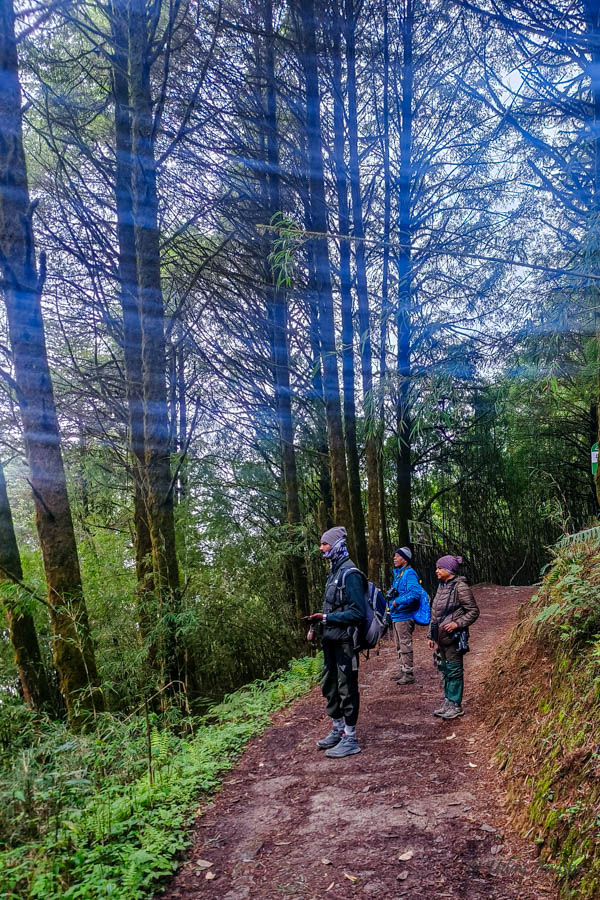
One good part of this trail is, that they have clearly marked the km distance. Near the 2 km mark, we heard the woodpecker and cuckoo calls but did not wait for them to come out. There were no signs of Tragopan anyway. While we were searching for the tragopan on the valley side, we could see the Rufous-gorgeted Flycatcher on the mountainside. As we started photographing the flycatcher, we also noticed the Long-tailed Minivets.
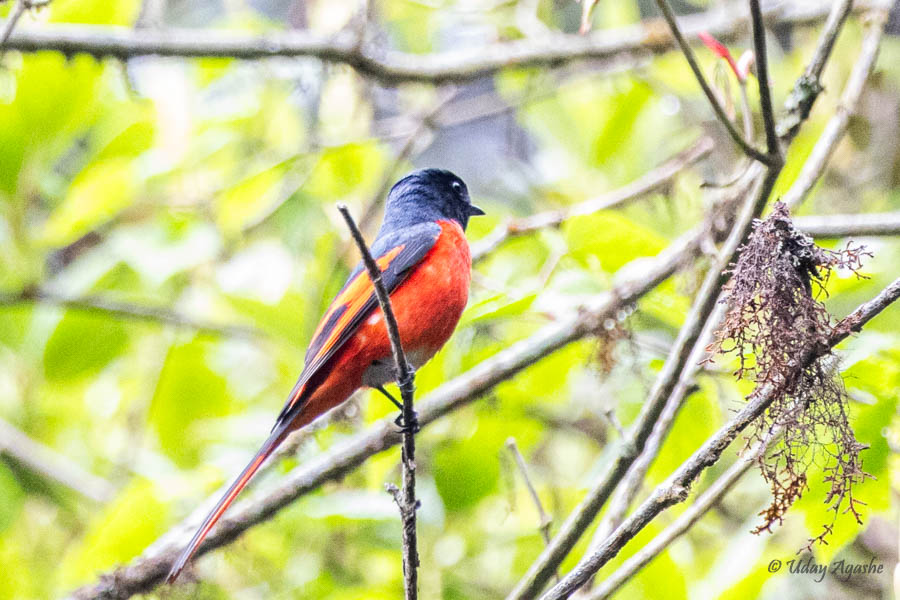
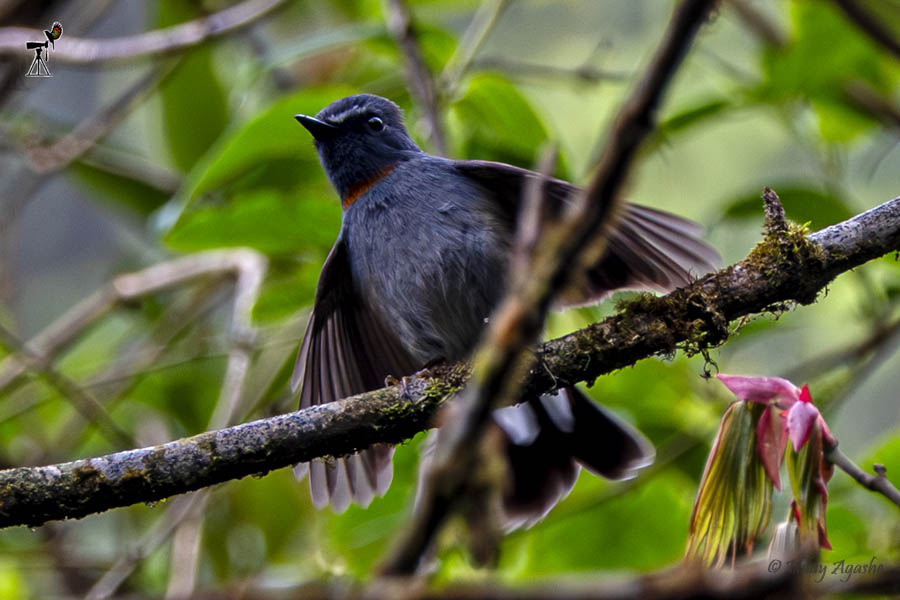
Just as we were moving ahead, we could hear calls of smaller birds, which meant the possibility of a hunting party nearby (this is where multiple bird species hunt together; they get protection because of their group size). Within no time, we started seeing a flurry of activity. There were Yellow-browed and Coal tits, Golden-breasted and White-Browed Fulvettas, 3 types of Yuhinas, multiple warblers, Black-throated Parrotbill, and minivets. Here I managed to photograph the Gold-naped finch (I had seen it earlier but was not able to take photos then) as well as the Streak-breasted Scimitar Babbler.
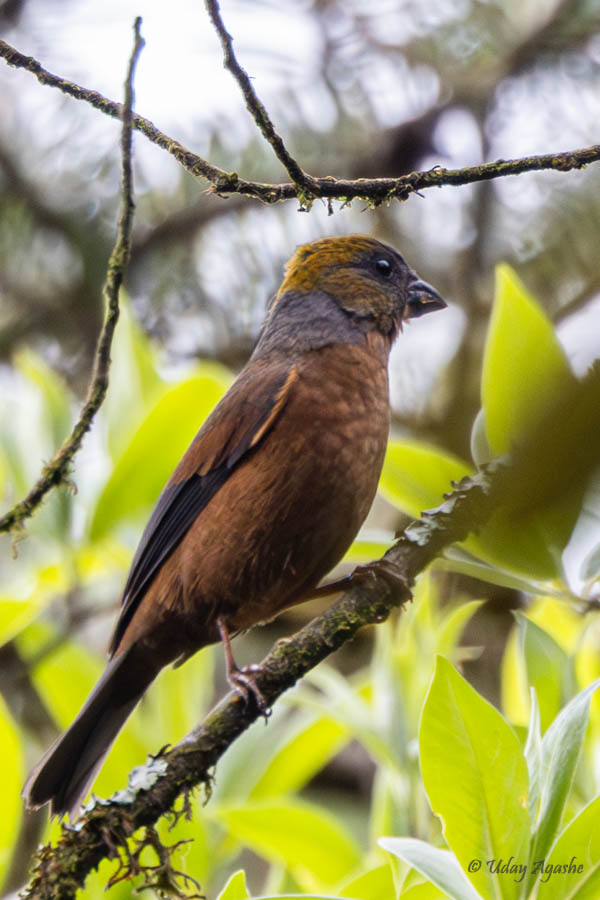
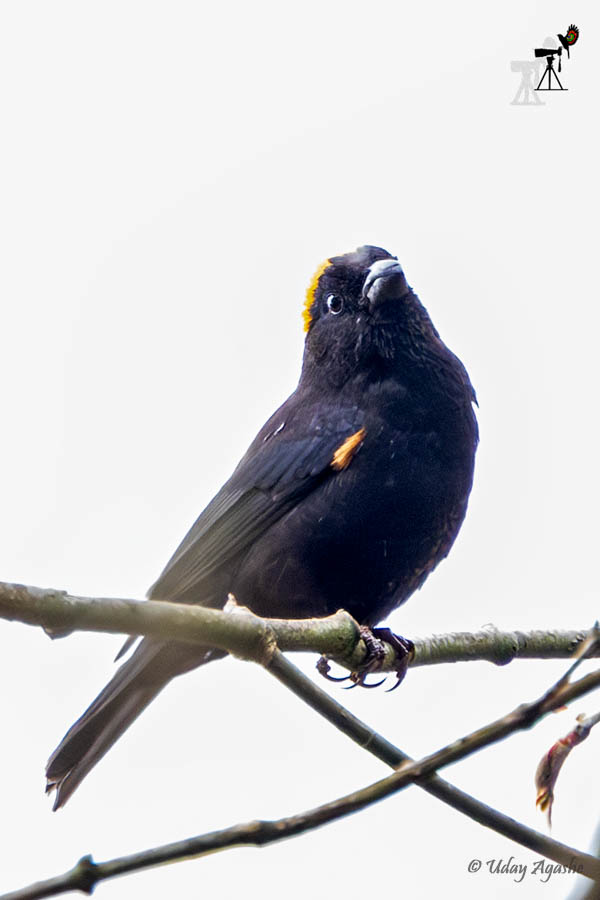
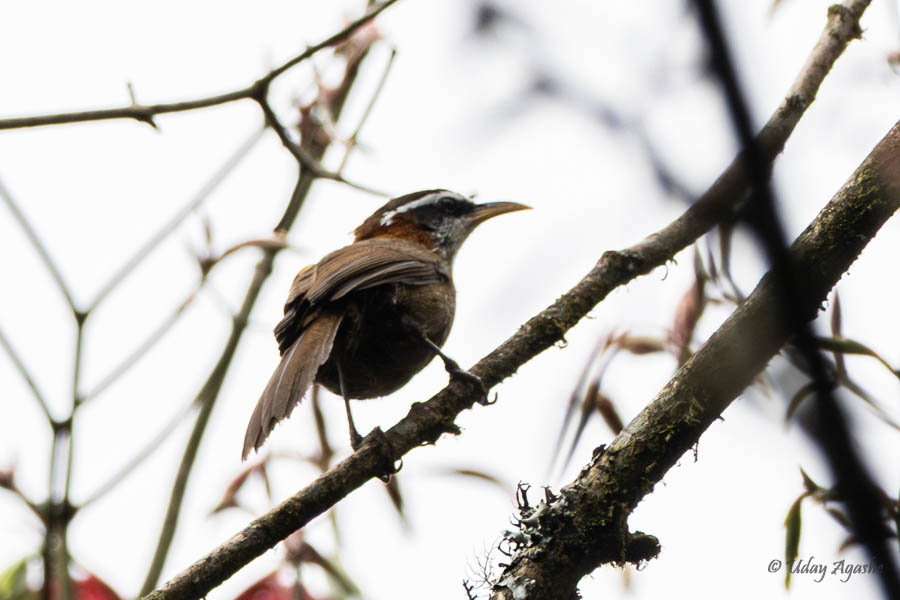
Our primary target was still elusive, but we got some other birds on this trail. The loud calls of the Nutcracker could not have been missed. And to our surprise, one Himalayan Shortwing suddenly appeared very close to us. It was busy foraging on the ground just 5-6 feet away from us. We remained motionless for some time, and it gave us some nice close shots. The funny part was earlier in the trail, we were literally struggling to take a single photo of this bird as it kept hopping between branches inside the clutter, and here it was like food on a platter.
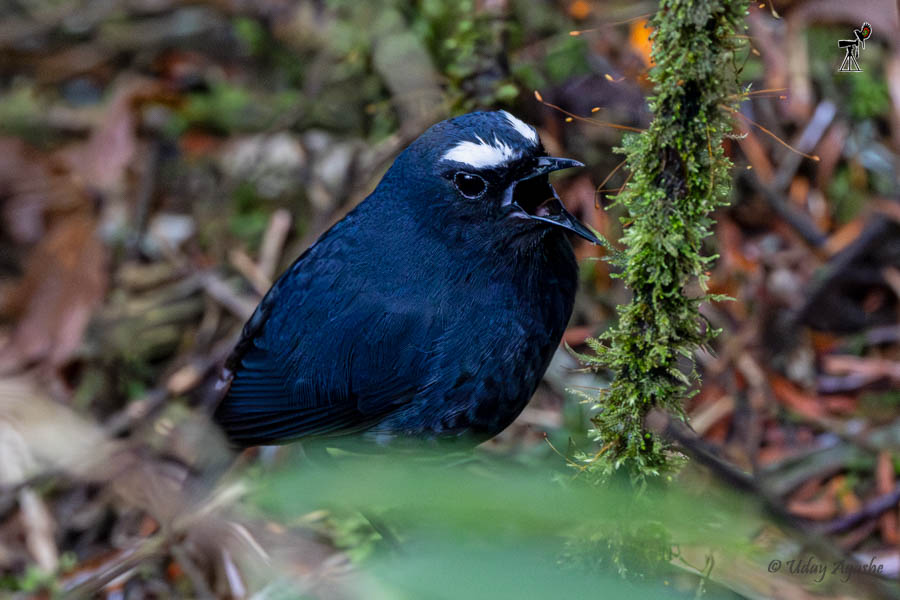
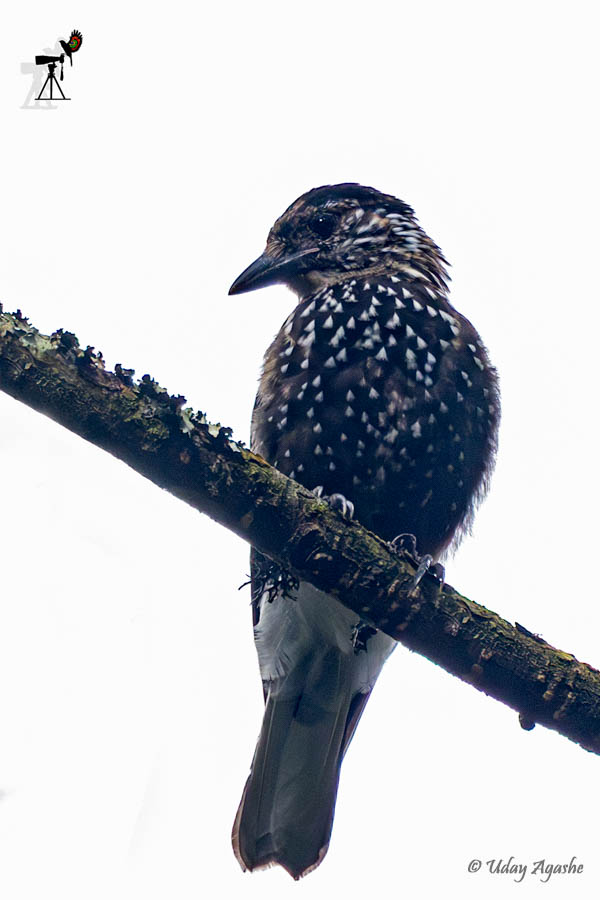
We started the trail just before 6, and by 9, we had only reached around the 4 km mark. We still had some distance to cover. Now we came across a flat land with some grass. We were tired as well as hungry, so we decided to stop there for breakfast.
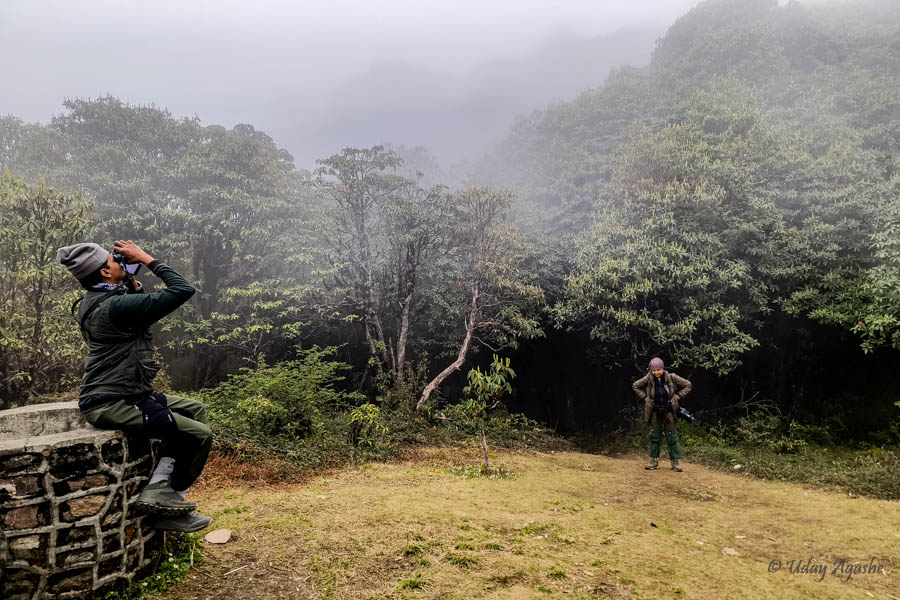
As were relaxing on the lawn, we saw a group of school children along with 2-3 of their teachers on the trail. All those guys were so enthusiastic, and they did not look tired at all. Their energy was contagious, we quickly started on the remaining trail.
As we reached the Barsey (5 km) mark, we could see a concrete structure, possibly a rest house. There were some tents on the open ground too. Here again, we searched for Parrotbills as well as Tragopan, but no luck.
At 10:30, we started our descent (hoping to be back for lunch by 1 pm). As the early morning hours were gone, our hopes of seeing the Tragopan had diminished. By now, the light had dropped considerably, and soon we could sense some sporadic raindrops.
I was considering taking out the rain gear (plastic cover for the camera and poncho for myself) when suddenly Avinash’s eyes glittered. He heard a faint call of the Tragopan from far below in the valley, but with that news, we all got very excited.
Now we were all waiting in anticipation. Avinash had pointed to the rough direction of the call as the calls were coming closer. It was such a pleasure to watch the reddish bird moving in the shadows, slowly coming up the valley. It might be just a few seconds, but the feeling was so good. So much so that in the excitement, I completely missed the opportunity when the Tragopan crossed the road (some 100 feet ahead of us).
It felt like missing a lifetime opportunity. This was a lifer (bird seen for the first time), and I missed the simple chance to capture it on camera. We strained our eyes and looked in the direction of the bird, but nothing was visible in the dense undergrowth (birds move so fast, that it might even have crossed beyond our visibility).
Although I had lost hope, Avinash had a feeling that the bird might cross again (coming from the mountainside and going towards the valley). And that actually happened!! This time, I was ready.
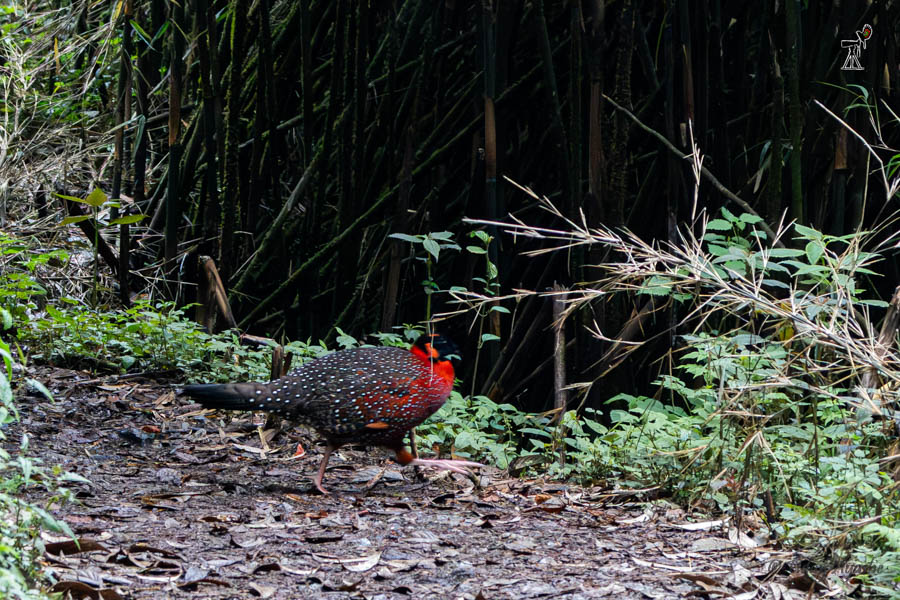
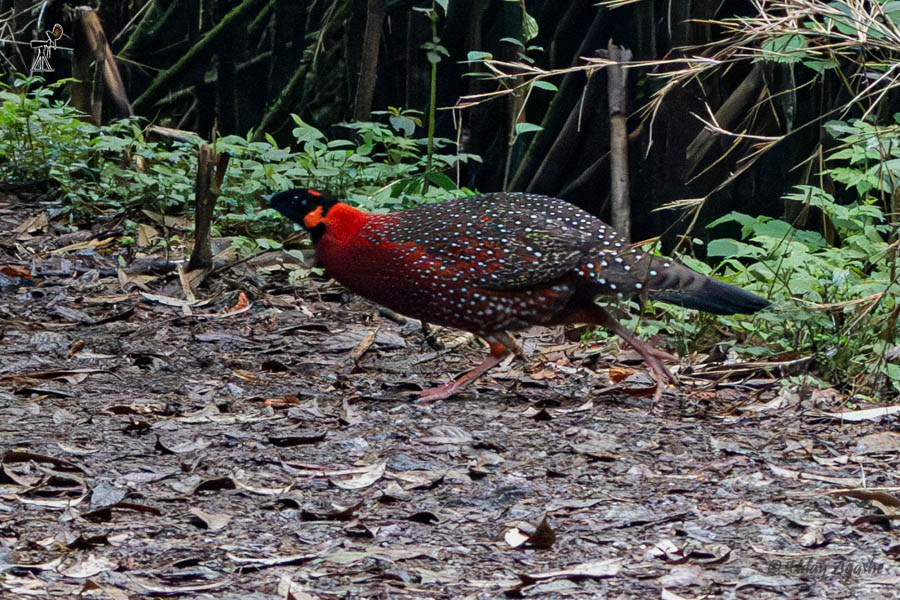
By then, the rains had started. As I had at least a few record shots, I packed my camera, but the others were still hopeful. To our surprise, the bird did this same routine once more, this time, I just enjoyed the movement with my naked eyes.
The rain then became heavy. Fortunately, we found a small shelter (made for trekkers moving on the trail), where we all put on the rain gear (for ourselves as well as cameras/binoculars).
Because of the continuous rains, we could not do any birding on the way. Obviously, we arrived at the main entrance earlier than expected. The journey from there to the homestay was eventless, but we were not complaining.
We planned to start the evening birding at 2:30, and we were all ready. The rain had stopped, but the sky was still overcast/ foggy. As we came out of the homestay, we could hear the calls of the Lesser cuckoo, and soon the cuckoo decided to perch close to us. It remained in the same spot for a few minutes. This allowed us to take not just photos but even a video. The only obstacle was the passing clouds (that were hampering the visibility from time to time).
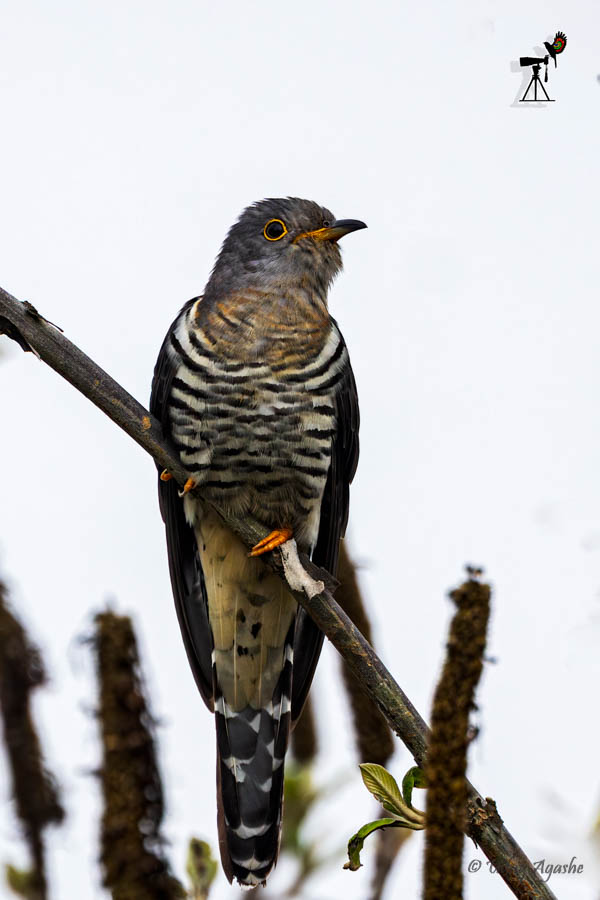
Now we moved towards Hilley (the trail starting point), but by the time we reached there, the rain became heavy again. We had no choice but to take shelter at the local tea joint where we had Maggi earlier. The weather was perfect for a hot cup of tea anyway, so we requested the owners to make a strong ginger tea.
The rain continued for more than an hour. We finally came out when someone alerted us about the beautiful rainbow that was seen in the valley side.
We barely had an hour of birding left that day, so we all quickly moved out. I saw a different type of Sparrow that was foraging nearby, and although its sighting was not uncommon, I somehow did not have a good photo.
The only notable sighting of that hour was the Hume's Bush Warbler. Another warbler, that camouflages well in the bushes, but here it allowed us some nice photos (but from a distance).

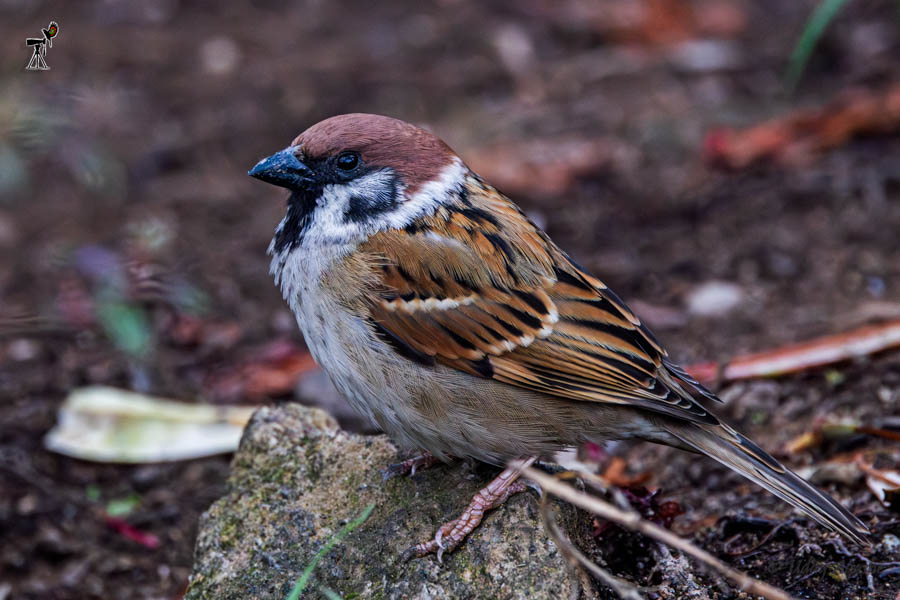

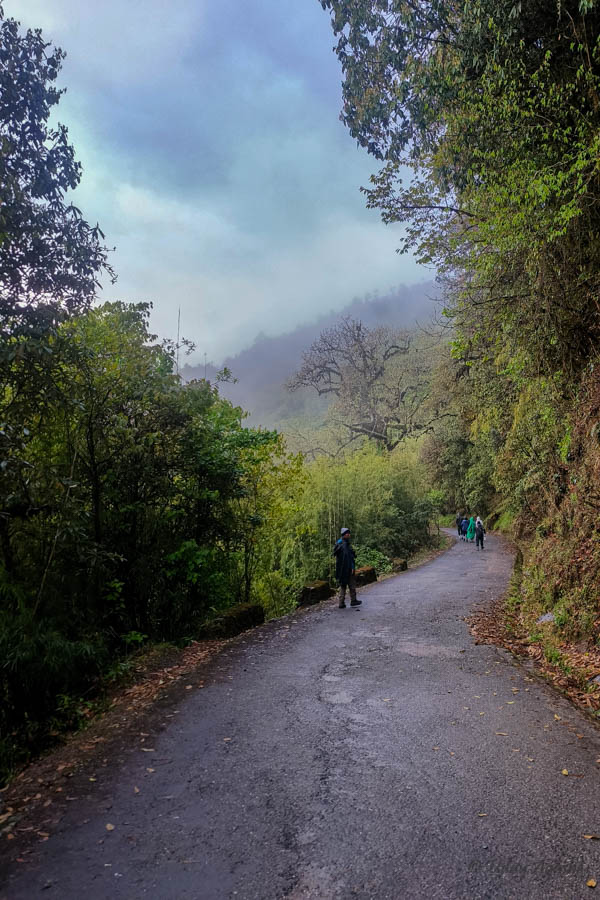
We were back at the base earlier than usual as the rain interruptions had increased.
Day 4: Travel to Pelling
Once again, we began our day at 5 am. The idea was to have a short birding session in Hilley and, after breakfast, start our journey towards Pelling (our next stop, where we planned to spend 2 nights).
As we started, we went to the Barsey trail point and from there started birding down up to our Homestay (easier to walk down than go up.. hence the start at the top).
So far, in the last 2 days of birding, I could see only one lifer, but this morning turned out to be better as we found my second lifer early in the day. The day before, Shiva Sir had shown me the picture of this beautiful bird (Broad-billed Warbler). The warbler turned out to be very bold and allowed all of us to take some good pictures, even light was good at that time,
In the first hour itself, we were also able to get decent photos of the Golden-breasted Fulvetta, Chestnut-tailed Minla, Green-tailed Sunbird, and a few other common birds.
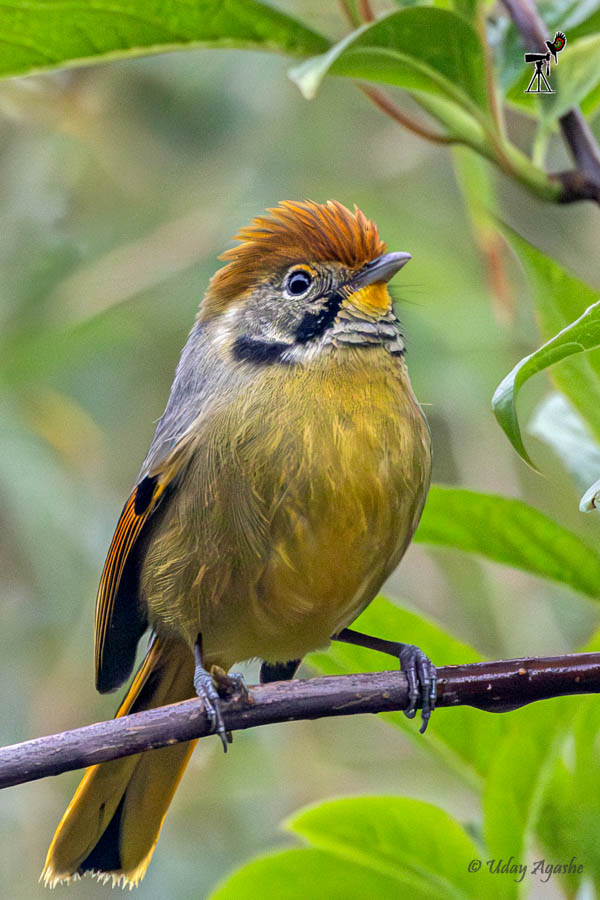

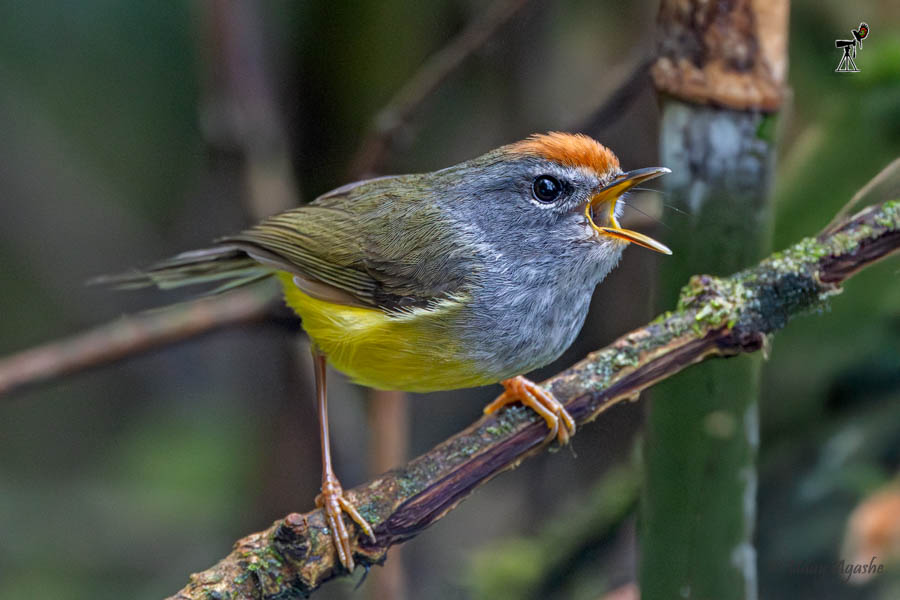
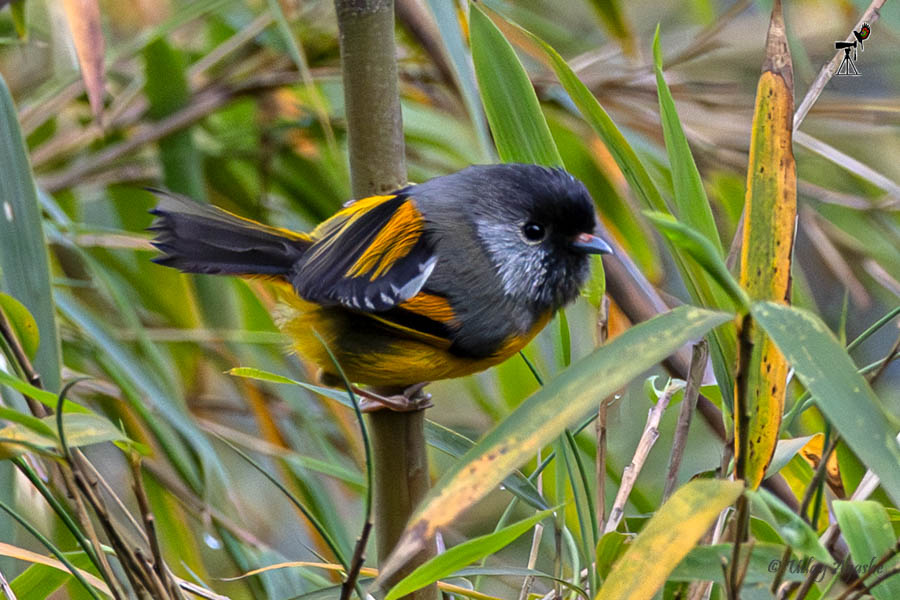
The warbler was a rarity, but besides that, we were eagerly searching for the Great Parrotbill. At one point, we even heard its calls, but the bird never appeared anywhere close.
As we were getting close to our deadline of 9 am, we could hear another warbler's calls. This time it was the Large-billed Leaf Warbler. From the calls, we could locate the bird, but it was perched far away. It kept moving from one tree to another, but never very close. We waited patiently for the next 10-15 minutes, and finally, our patience paid off.
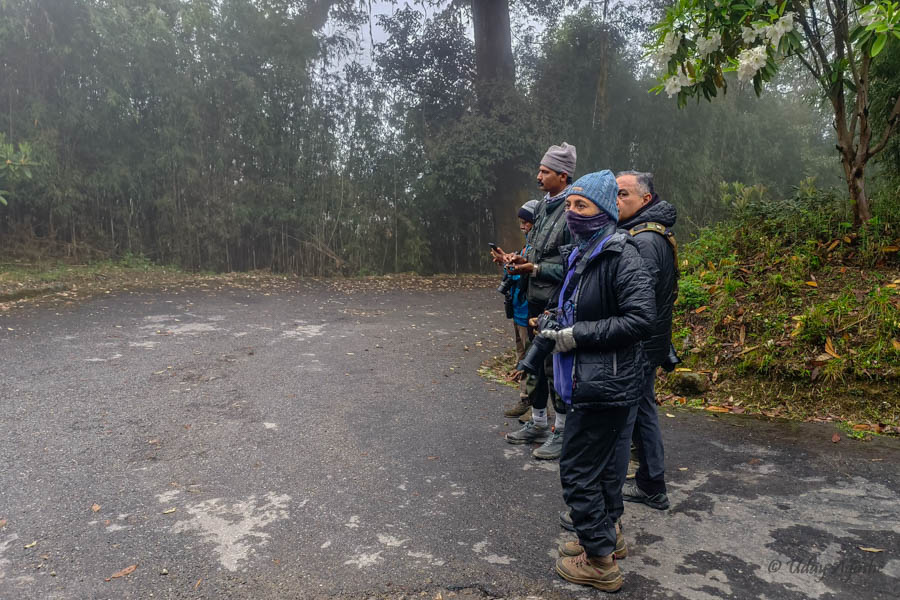
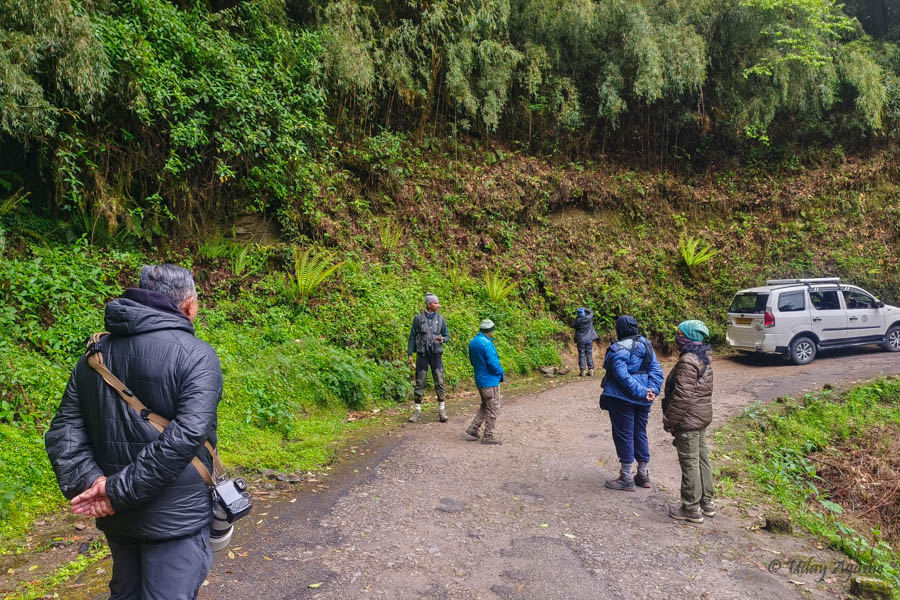
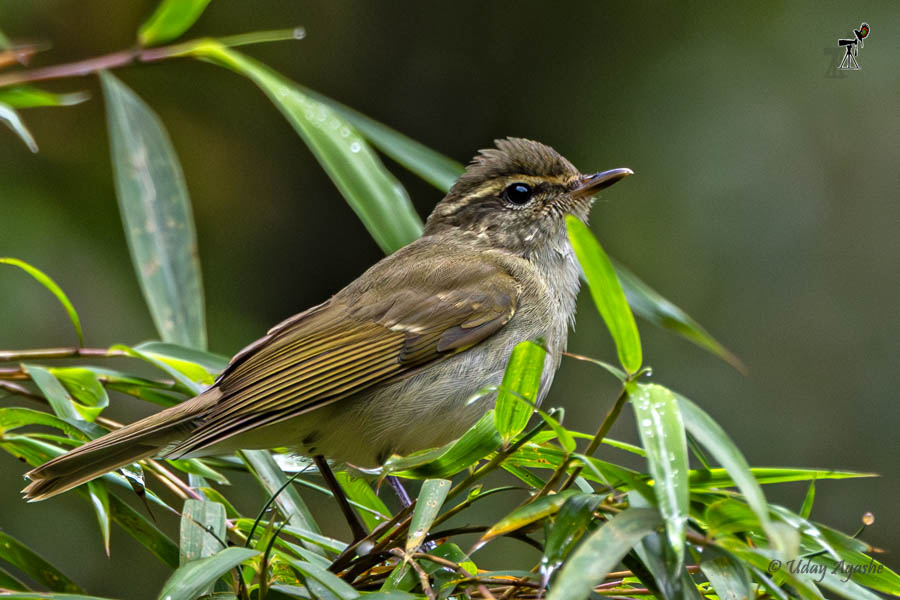
As we reached our Homestay, breakfast was ready. After that, Avinash gave us half an hour to pack the bags and be ready for the road trip. By 10:15, we were on the road. Our drivers had taken guidance from our homestay owners, so we knew the road to Pelling (via Rumbuk, Soreng).
Google Maps showed a 4-hour journey. As we knew the bad road conditions while coming, we added an hour to that. Together with the lunch break, we expected to reach Pelling by 4. Even hoped to do some birding there.
This estimate turned out to be ghastly incorrect. Besides the bad roads, we had to encounter some traffic, plus at one point, we had to take a big detour (through non-motorable patches that cannot be called a road by any stretch of the imagination). Not just a lunch break, we also had to take a tea break at 5 pm. By the time we reached our hotel in Pelling, it was past 7 pm. Got our room keys for the 3rd floor (explicitly mentioning because there were no lifts. The reception staff also informed us that if we intended to have dinner there, we had to order within the next 10 minutes as they were closing the kitchen soon.
There was one other thing that we had to sort out. We were hoping to have an early start as usual, and Avinash knew from experience that the front gate of the hotel is locked at night and there is no one at the reception to open it. So we had to take the number of the caretaker who would open it for us.
Day 5: Pemayangtsey Monastery & Bird Park
We were ready by 5:30 today as planned, and by that time, there was sufficient light outside. Our rooms were on the top floor, and when we checked from the common balcony, the view in front was amazing!!
The snow-clad Kanchenjunga range, along with the layers of adjoining mountains, was breathtaking. Unfortunately, I could not capture this beauty with my mobile camera (and did not have a wide-angle lens for the camera).
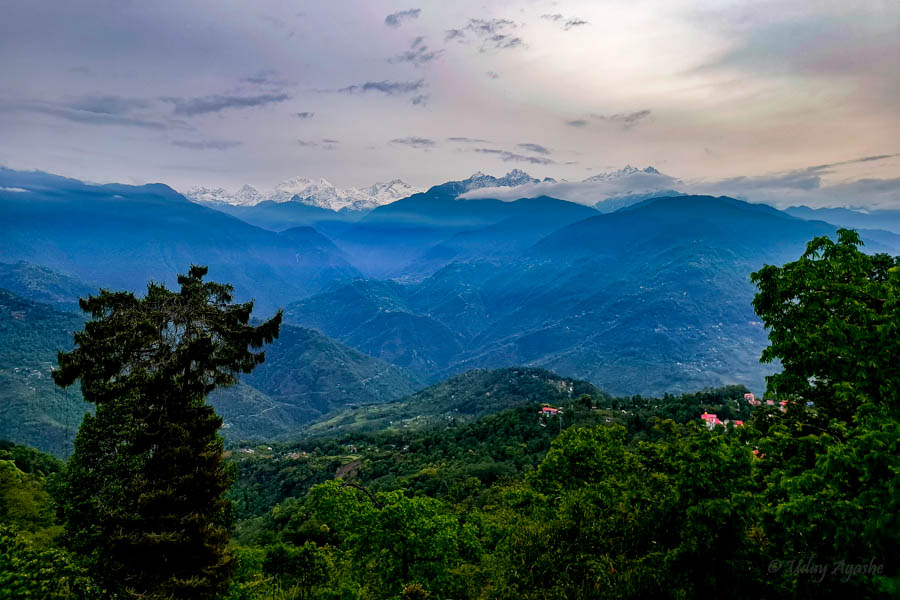
It turned out that this was our only opportunity to photograph this vista. At all other times, we could not see the mountains because of the mist/clouds/fog.
Our birding location was just a couple of kilometers away. On the way, we checked a park with tall trees, where we could see a few birds (Sibias, and Bulbuls mainly). The light was not sufficient, so we did not wait there. But a little ahead, there was a lake. Here, we could observe a pair of Sikkim Treecreepers. They seemed to be very active and were carrying nesting material (and prey too) to a tree hole (which appeared to be their nest).
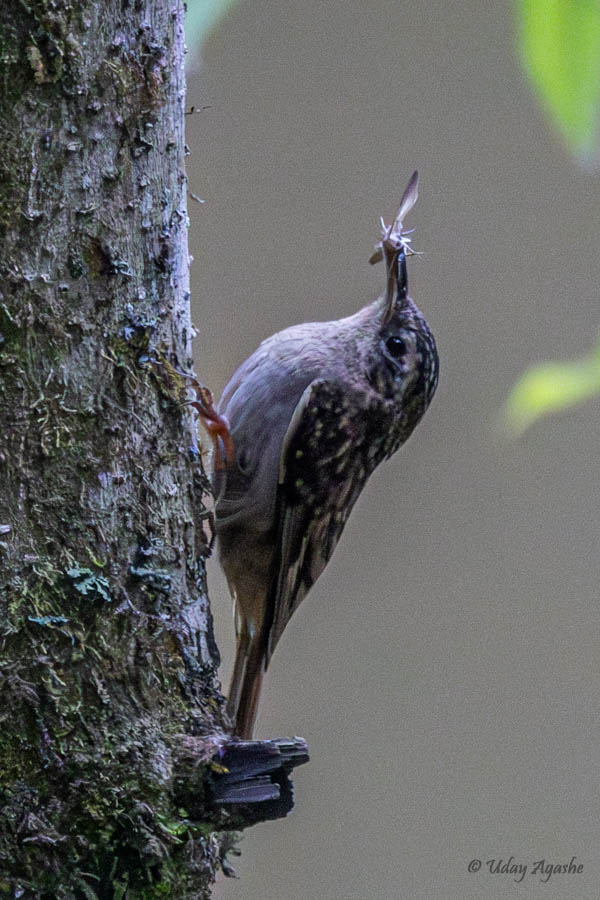
Then from 6 am to 8 am, we were birding near the Monastery area. Close to it, there was one Heritage resort, and those guys allowed us to do birding inside. We were able to see 2 Verditer Flycatchers and a Large Niltava foraging near the cement structures. As we kept moving along, there were a lot of birds seen (all must be out earning their breakfast). There were Golden-throated and Great Barbets, Short-billed Minivets, Some Shrike-babblers, Grey Treepies, Ashy Drongos, Tits, and Fantails around.
In the sky, we could see 2 varieties of swifts/swallows catching their prey mid-air. These were identified to be Himalayan Swiftlets and White-throated Needletails.
Someone then located a very colorful sunbird. It kept moving so fast that we struggled to capture Mrs. Gould’s Sunbird (both male and female were seen). As we were making unsuccessful attempts at taking its pictures, a Large Hawk-cuckoo came and perched on a branch high above us. Its repeated calls helped us identify it correctly (many cuckoo species look similar, and their call is the only easy way to identify them).
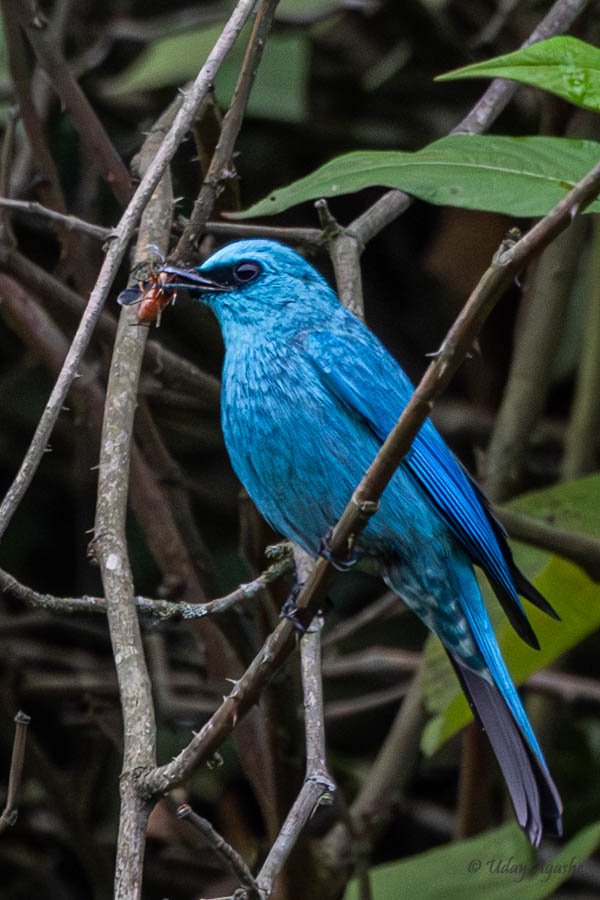
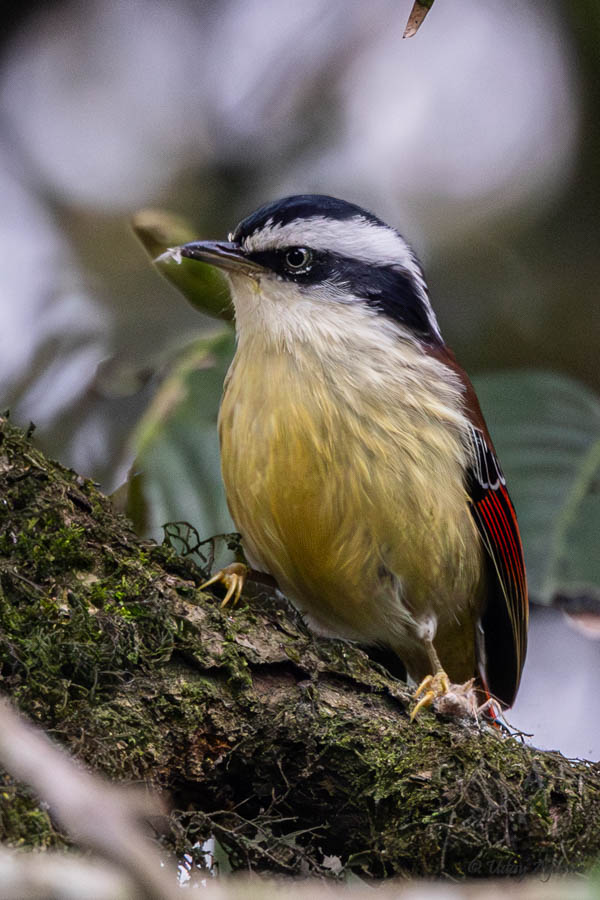

Avinash then signaled me to check the Bulbul at the top of a tall tree. I had expressed my wish to photograph the Striated Bulbul, and he was correct in identifying it. After that, I spotted 2 very common birds on a wire, but the background for those was amazing.
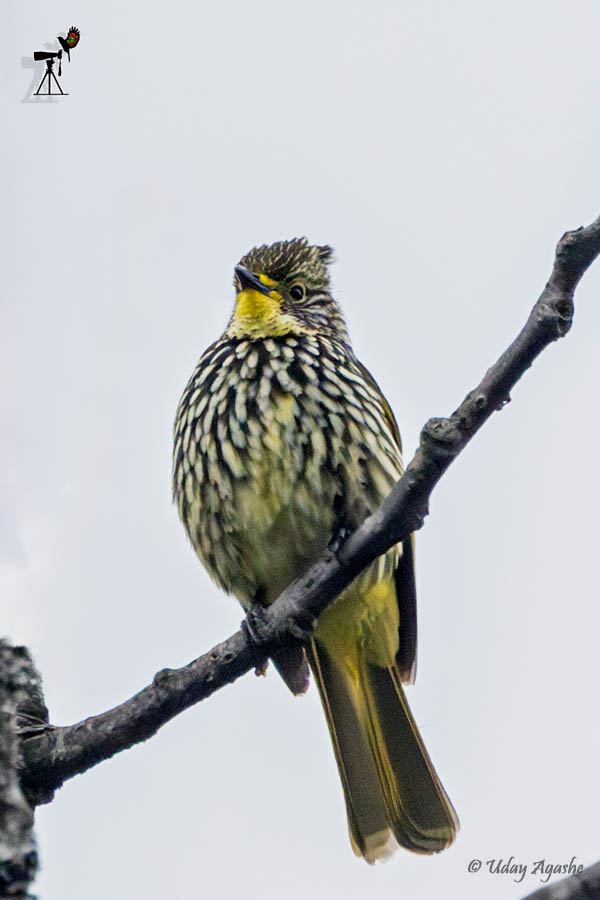
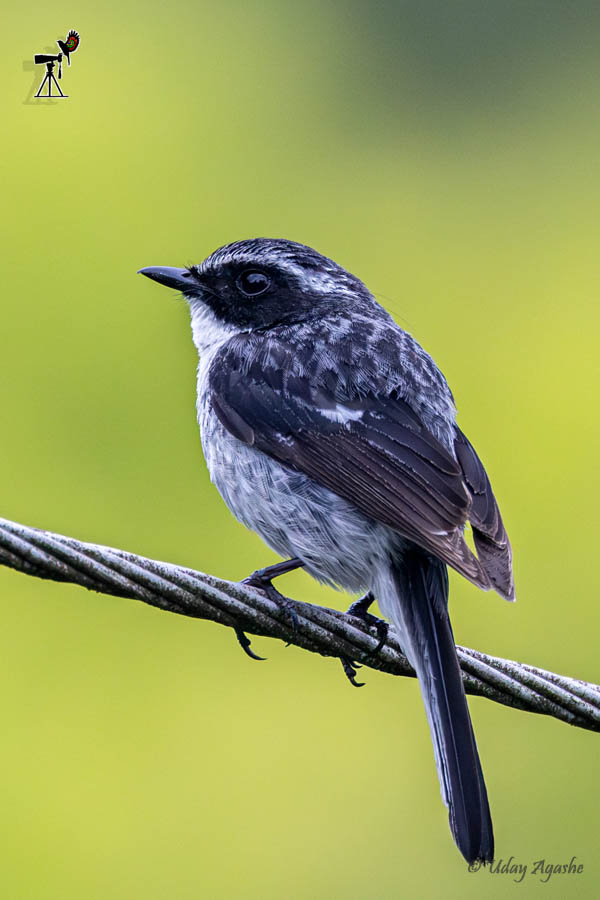
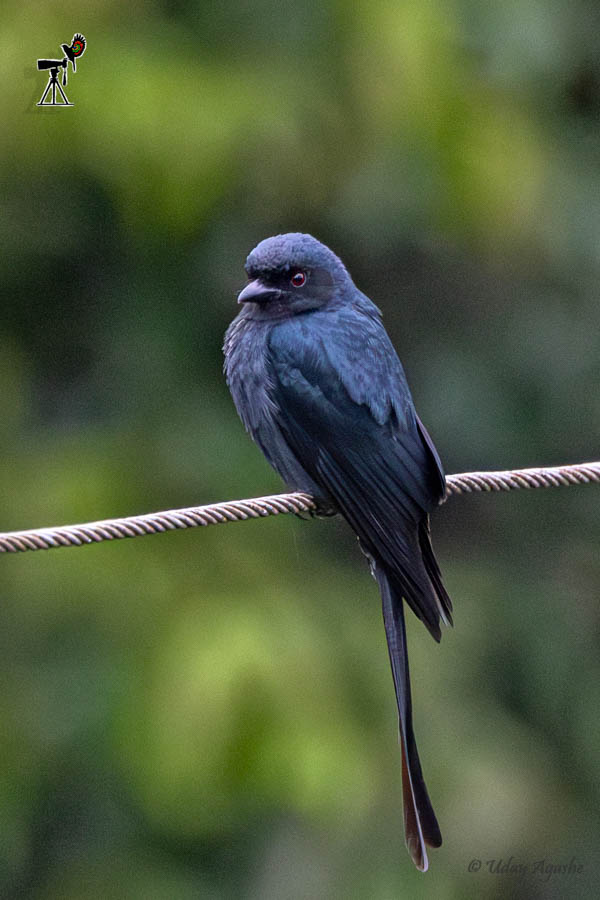
We spotted the Sunbirds once again, and this time we could get some photos too. We were then alerted by a woodpecker's calls, which turned out to be the Crimson-breasted Woodpecker.
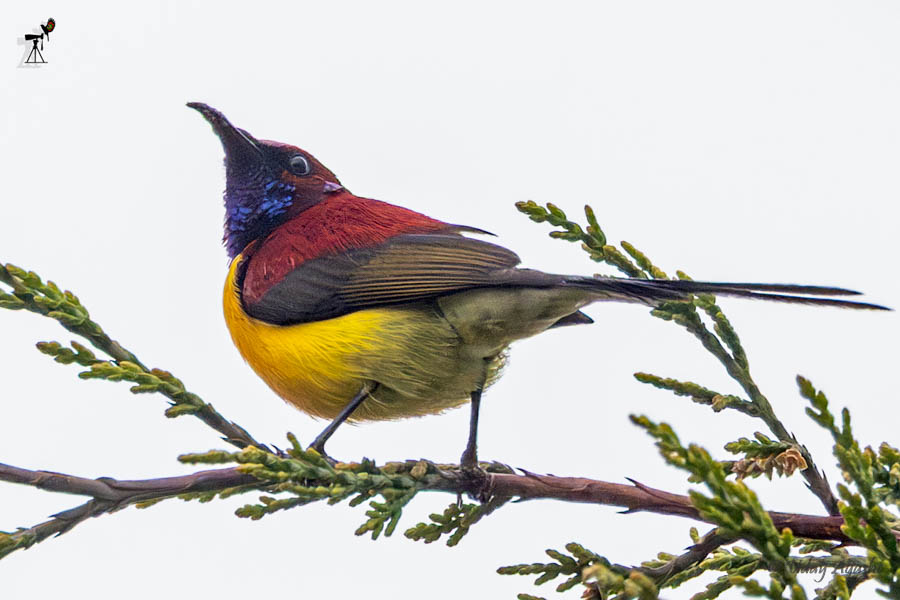

After this initial flurry, suddenly the bird activity reduced. We decided to have our breakfast there. Yesterday, after dinner, we bought some bread, cheese slices, and fruits (just before the shops closed) that came in handy now.
After breakfast, we planned to visit the Rabdentse Bird Park area. This, according to Avinash, used to be a very good birding patch. A few years back, they converted part of the jungle into a bird park (where exotic caged birds were on display). We did not intend to visit this zoo, but the area around it was still a good, dense jungle. And the approach road was through the bird park enclosure.
But we were early, the bird park gates did not open till 10 am. We had some spare time, so we decided to explore the nearby areas. Turned out to be a good decision as we could spot a Little Pied Flycatcher.
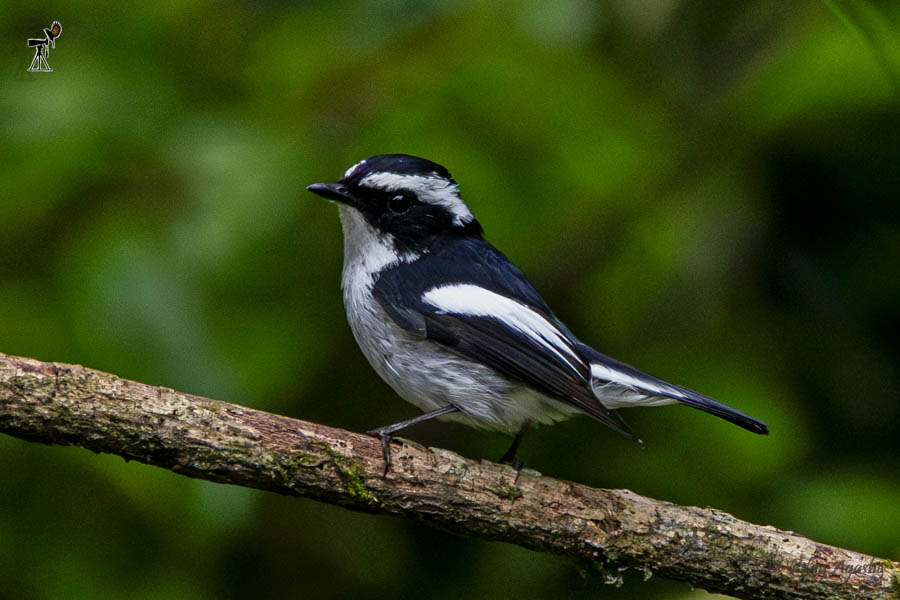
We still had an hour to spend (and nowhere to go), but we got early entry to the park through a tragic incident. There was a funeral procession coming from the village, and they had to go through the same park entrance. Once the gates were opened, even we managed to sneak in.
Although inside, we were not allowed to go on the trail. We utilized this time by having some snacks and tea (and some discussions over it).
At sharp 10, we began our trail. To our surprise, there were umpteen tourists on the path. It seemed the bird park entry had 3 different pathways. One led to the zoo, the other to the cremation ground, and the third was our birding trail (that was also the path for going to the old ruins). These ruins were from the days when the place was Sikkim’s capital, and the King had to abandon it due to an enemy approach from the Nepal side.
So we began birding along with a lot of curious onlookers (who had no clue what we guys were doing). But the jungle was nice, and dense, with tall trees and decent bird activity.
Here was saw the Snowy-browed flycatcher, not a lifer but seen first time on this trip. There were a couple of Large Niltavas (they were seen in good numbers across Pelling), a Little Pied-flycatcher, and a Rufous-winged Fulvetta.
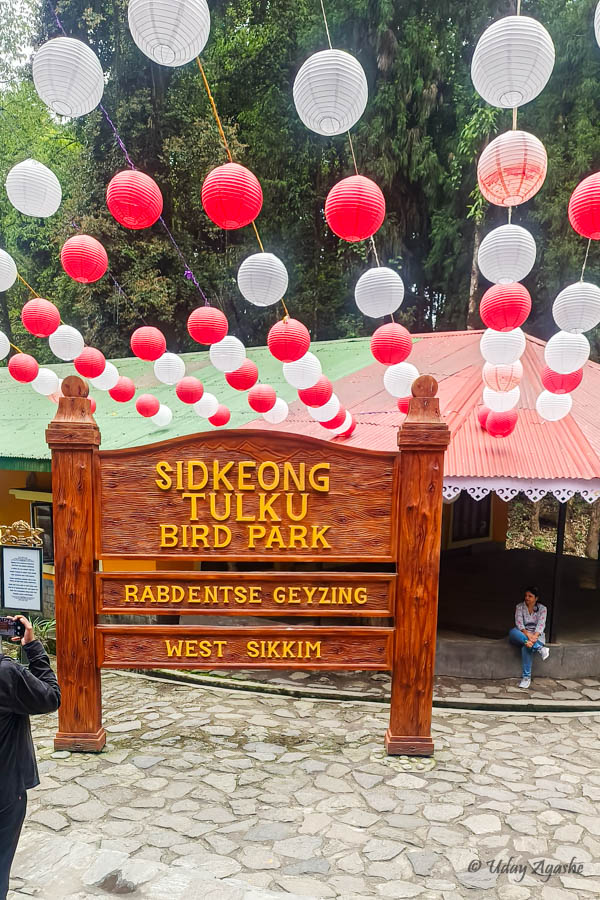
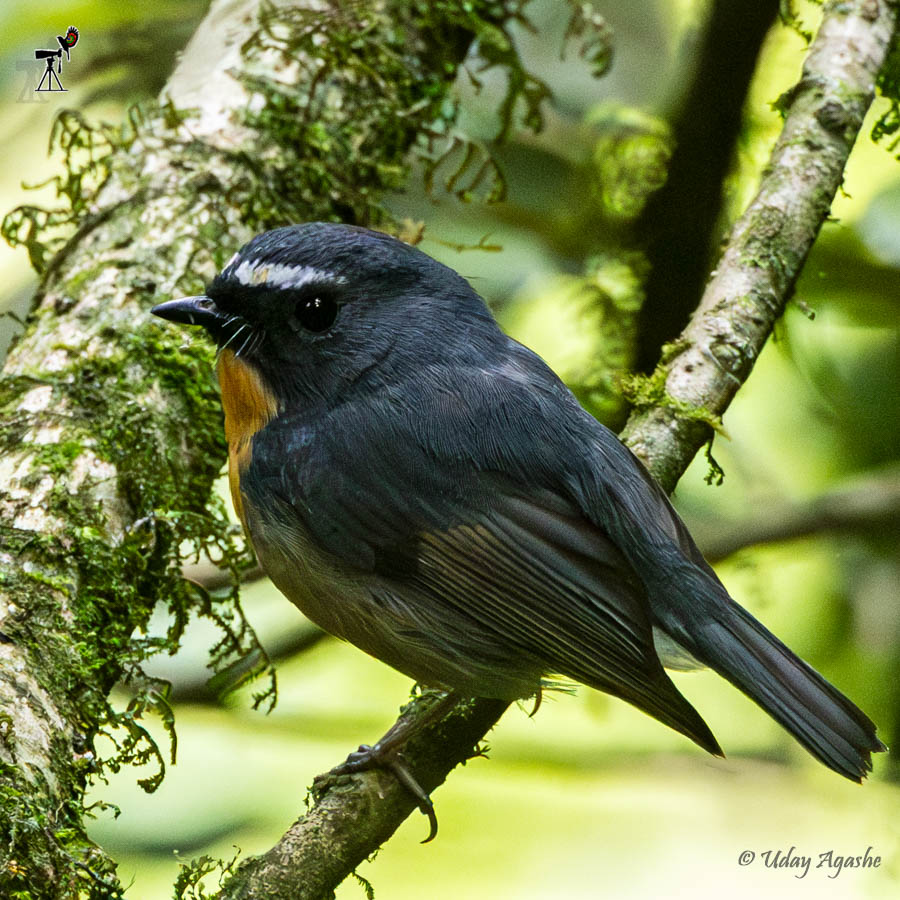

As we were moving up the trail, Avinash heard the calls of the White-gorgeted Flycatcher. This was one elusive bird on everyone’s wishlist. Then began our 2-hour saga for the flycatcher darshan.
Based on previous experiences with other birders, this one is very shy and prefers to remain inside the foliage. So we were ready for the long wait. Avinash first saw the birds through canopies, but that meant we had to walk a steep gradient into the jungle. We all somehow managed to do that, and waited patiently, but now the bird was not visible at all. Then, for the next couple of hours, we were moving within a radius of about 20 meters (up and down the slope) just to get a glimpse of it.
At one point, Avinash managed to get down into the valley some 30-40 feet and managed to see the bird, he even took some photos. But the slope was impossible for all of us to traverse. We just managed to see its movement but were not able to capture anything.
By now, our patience was wearing thin, but Avinash kept track of the bird's movements and finally, some of us managed to capture it on camera. The experience was so fulfilling, it was like we earned this lifer!
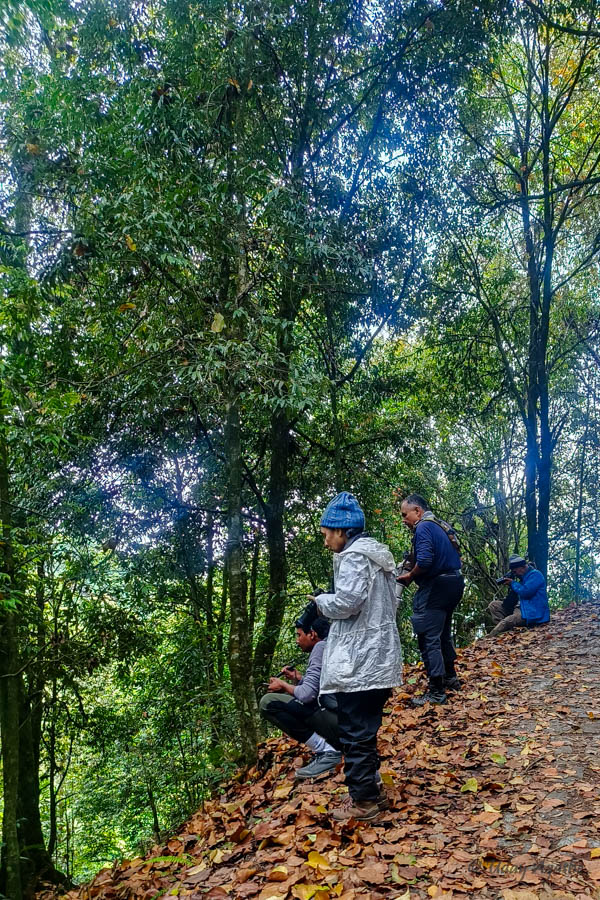
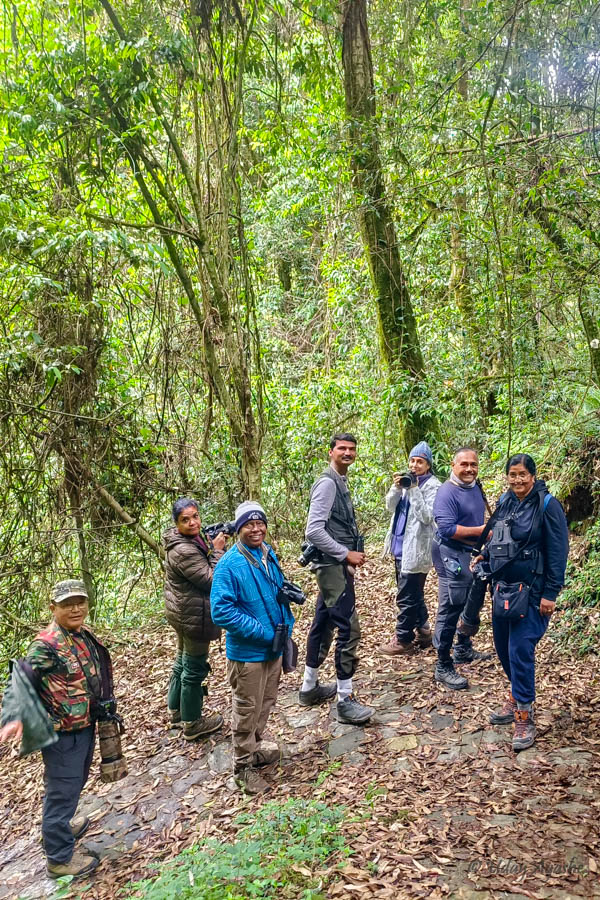

Some of the tourists who had seen us while going up were surprised that we were at the same spot when they were climbing back. We then showed them our prized catch. They appeared to admire our patience, but likely thought us foolish for dedicating so much time to it.
Anyway, that sort of ended our morning birding. It was about 12:30, so a little early for lunch. Our afternoon birding was scheduled at the Khecheopalri Lake (or Khechiperi Lake). It was about an hour's drive, so we decided to have lunch there.
By the time we reached there, it was close to 2, and all of us were very hungry. One of our drivers knew a small joint there, so he had asked them to prepare lunch for us. It was a simple preparation of rice, daal, chicken, one leafy vegetable (that is readily available in the jungle), and an omelet. As we reached there, they arranged a makeshift table in a small room and brought our lunch there. The food was simple but it tasted amazing!
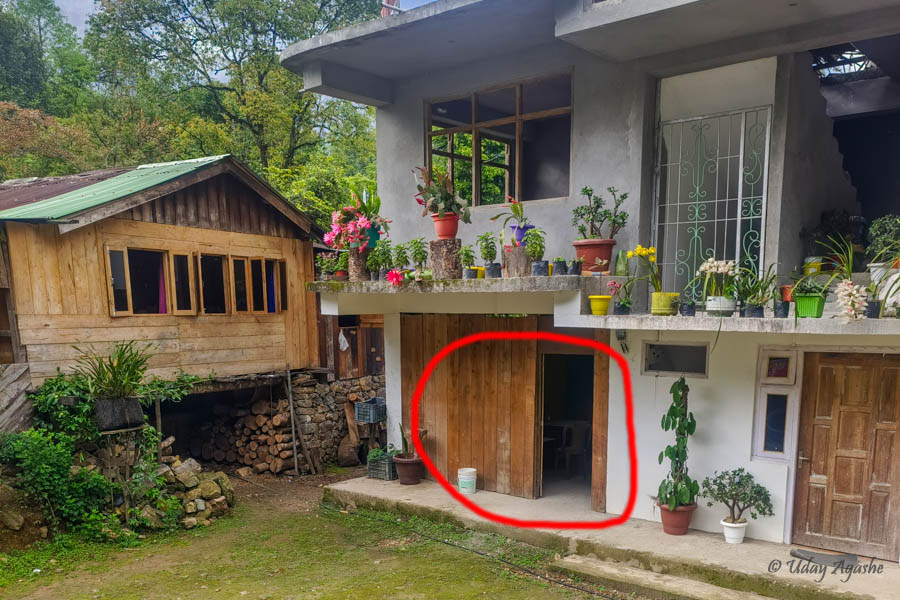
After lunch, we went for a round of the Lake. We walked for about a kilometer there, but there was hardly any activity. Towards the end of that trail, we saw a grassland and after a lot of struggle, finally managed to see a pair of Black-throated Prinias.
On the way back, we heard some bird calls and decided to wait there for some time. That turned out to be a good decision as soon, we managed to see the White-tailed Nuthatches (4 of them), Black-eared Shrike Babblers, some Yuhinas, and Fulvettas. But the prize catch was the sighting of a Pygmy Flycatcher (a rare one).
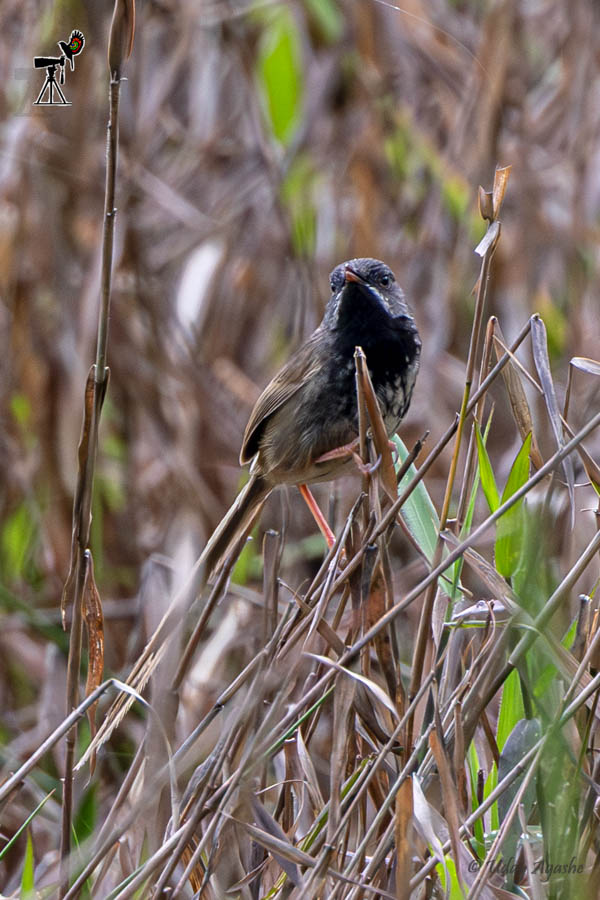
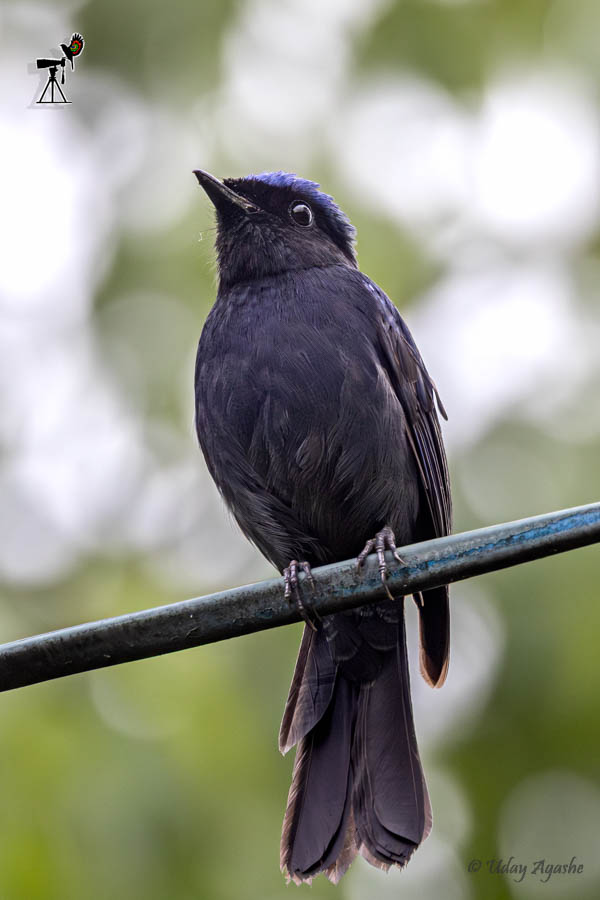
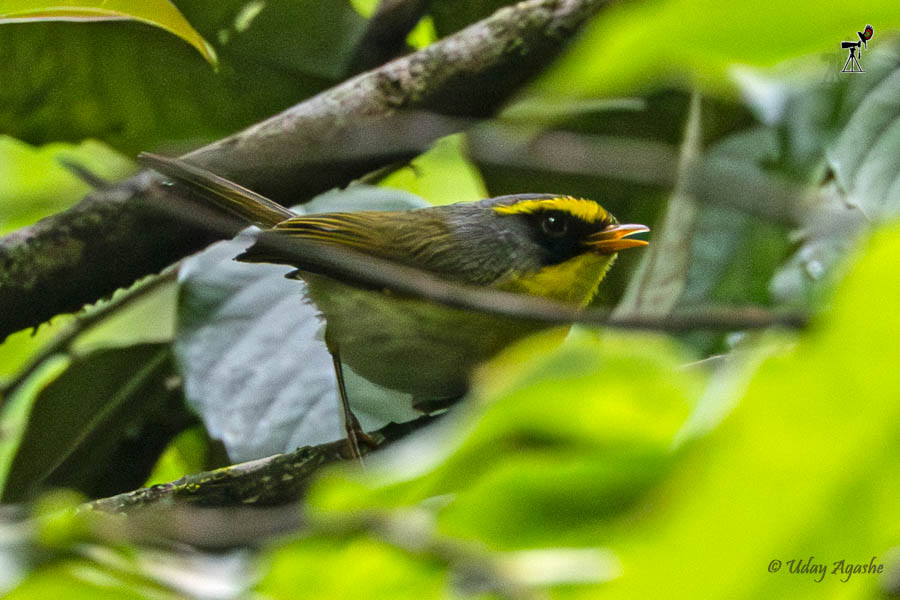

With that good session, we decided to have a tea break (same place where we had lunch… there was not much choice anyway) and then back to our hotel by 6.
Day 6: Goodbye, Sikkim
Today, we would be starting our return journey, but before that, we did a morning birding session at the Monastery area once again. Oh, and we also visited the monastery.
It was a foggy morning, and the bad visibility hampered our photo quality (but we took some photos anyway).
As I got up at 4:30, I got the news of Operation Sindoor through various WhatsApp groups. During the day, there were multiple discussions related to that. There was excitement, some proud feeling for the steps taken by our Country, but also some concerns about the war damages that may follow.
Getting back to birding, first on the list today was the Grey-winged Blackbird. The male had found a long earthworm that it was holding in its beak. Here, we could hear a drumming sound. The calls were then identified as Bay Woodpecker. Soon, the woodpecker entered the scene. It kept changing branches but allowed some photos anyway. Although the light in general was bad, we got the Nuthatch in good enough light.
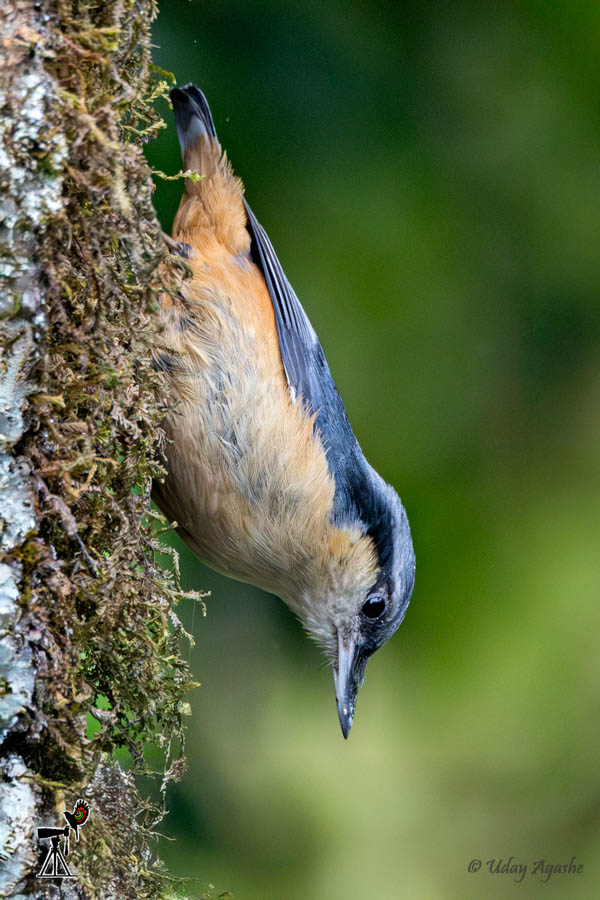
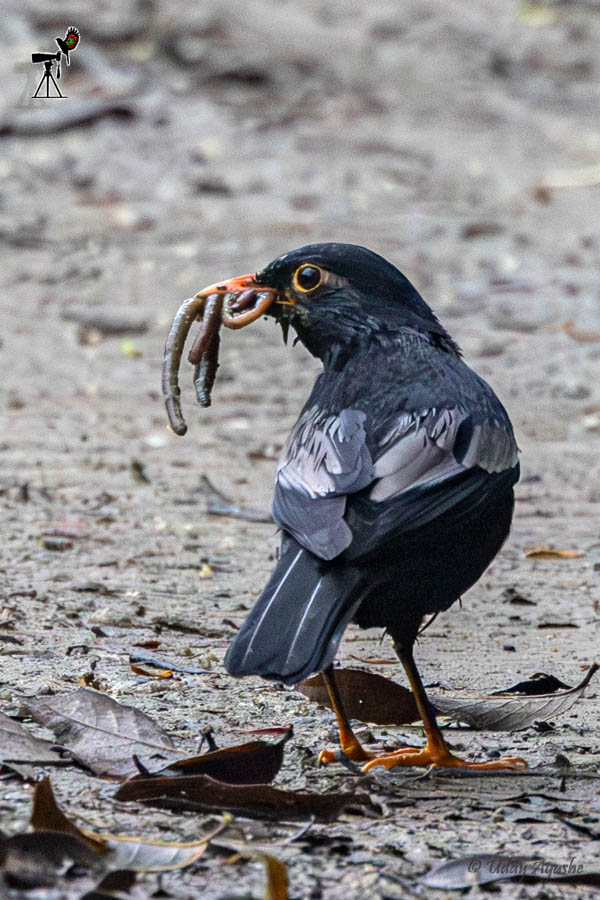
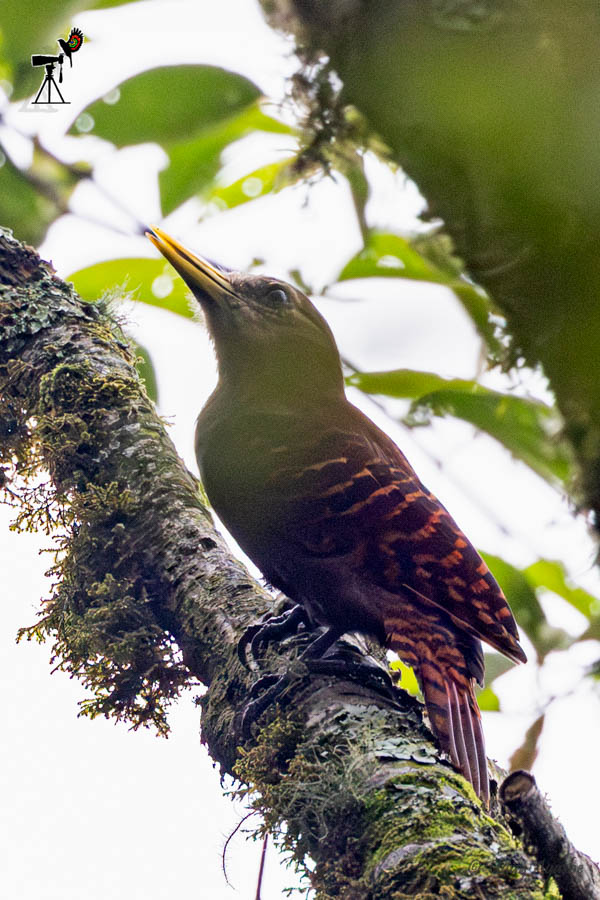
Our birding breakfast once again included bread, cheese slices, bananas, and juice. After that, the light was slightly better, and we got some more birding opportunities.
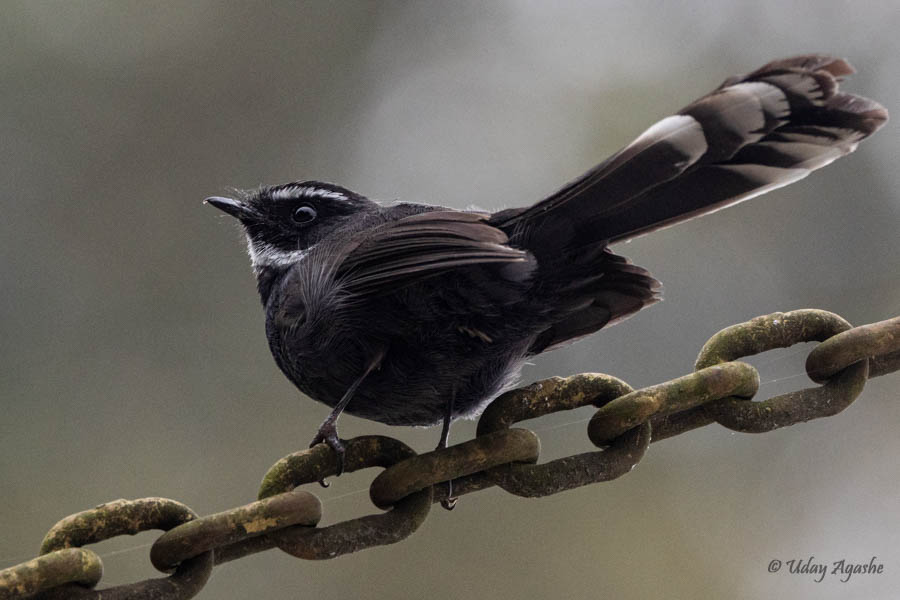
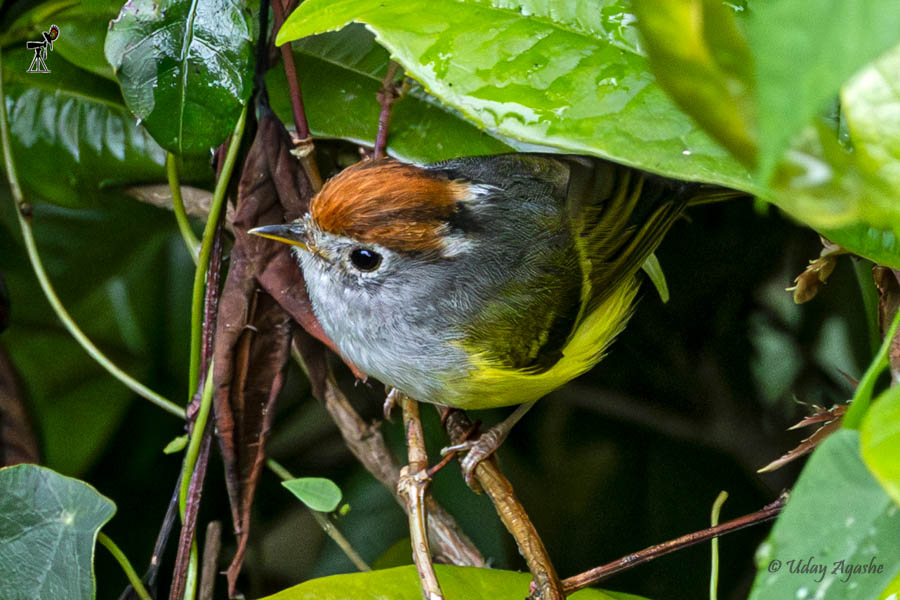
Next on our agenda was the Monastery visit. Pemayangtse means "Perfect Sublime Lotus". This monastery was built in the 17th century (1647) by Lama Lhatsun Chempo. The monastery was built for "pure monks" (ta-tshang), meaning "monks of pure lineage", celibate and without any physical abnormality. This practice is still retained. We could see some very young monks, who reside here and learn in the traditional way.
It is a very colorful structure, and at the time we went in, some ritual/recital was being conducted by the head monk. We witnessed it for a few minutes and also visited the museum, where some old artifacts were kept. Photos were not allowed inside, so we could not capture the colorful interiors.

At the hotel, we had kept our bags ready. So we could start our road journey to Rongtong by 10. Once again, Google Maps showed us the travel time of 5 hours to cover the 120 km journey. With our experience, we knew it would be a little more than that, but in reality, it turned out to be a never-ending journey.
Just before crossing Jorethang, we had to stop abruptly, as there were multiple vehicles ahead of us. Our driver got down to check. It was a planned roadblock (for some road repair work), and the road would be closed for at least an hour more. It was only after one and a half hours, they opened the road and we began our journey. Then by 1 pm, we had our lunch break (fortunately, the meals were cooked quickly and the service was fast).
Next came the legendary traffic of Darjeeling city. The roads were narrow, and there were too many vehicles on both sides. I don’t think I will ever be able to drive on these roads, but our drivers were doing a fine job. As we crossed that, suddenly, there was fog. The road ahead was barely visible. Here, we came across the famous Darjeeling train (famous after the Rajesh Khanna-Sharmila Tagore song “Mere Sapano ki Rani….”).
Around 5:30, we crossed the Ghoom area but still had to cover 20+ kilometers. So we had another tea break to stretch our tired legs. Then we came across another road-block, this time a truck was unloading some pipes near the railway track. Luckily, he finished the work in 15 minutes and we started again. It was getting dark and the road turns were never-ending. This time, even our driver was losing patience.
Finally, at 7:30 we reached the Yamfu Homestay. It took us so much time, that we might have been better off skipping the morning birding at Pelling and having one evening birding at Rongtong (which we were hoping when we started at 10).
Day 7: Last Birding Session & an Unexpected Lifer
As usual, we started our day at daybreak. As we started from the homestay at 5:30, we had a strict deadline to return by 8. With our recent journey experiences, we did not want to rely on Google Maps timings and hence kept an hour extra for travel.
Due to the technicality of not using local vehicles, we had to necessarily hire a local birding guide. Our targets included the Bazas (Black as well as Jerdon’s) and the Chestnut-winged Cickoo.
Right from the start, there were birds everywhere (when we look for them desperately, they go in hiding, and now when we were short on time, they all decided to come out in the open). The list included Blue-throated Barbet, Common Hill Myna, Wedge-tailed & Pin-tailed Green Pigeons, Grey-headed Woodpeckers, Oriental Cuckoo-shrike, Drongos, Great Barbet, and the list just goes on. Due to paucity of time, we quickly took some photos and went straight towards a known location for the Black Baza.
The Baza was seen but it was sitting on the nest (on a faraway tree), we managed to get a few photos from that distance. As we were checking on Baza, we could also see 2 Common Green Magpies and a Green-billed Malkoha close by.
Our next stop was Jerdon’s Baza. Once again, the bird was perched on a tall tree, and we all managed to get some decent pictures. We had to cover a lot of distance to reach that spot but with the guide’s help, we moved around quickly.
We were constantly keeping a watch on the time, but I wanted to see the Cuckoo. We tried a couple of possible spots but did not hear or see the cuckoo. On the way back, Avinash told me that there was one last stop where we could try again. As luck would have it, we reached there and within a few minutes could hear the cuckoo calls from somewhere in the valley below.
It did not make us wait long. The cuckoo came and sat nicely on an eye-level branch. Not just that, we were able to shoot its calling video too.
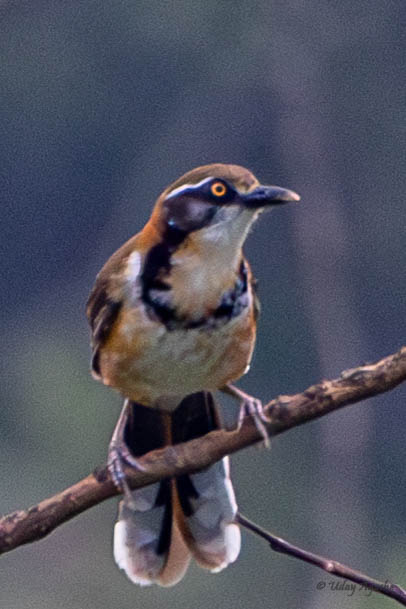
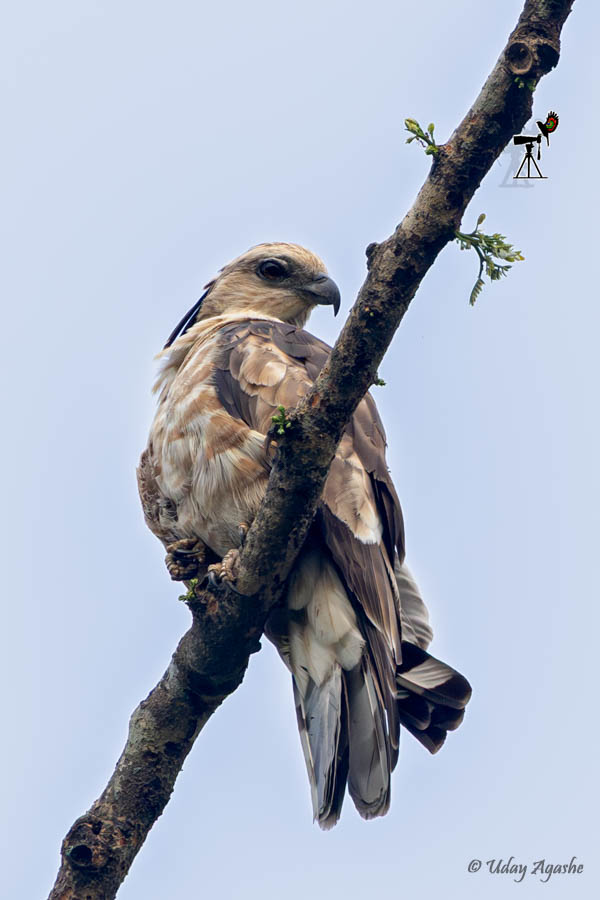
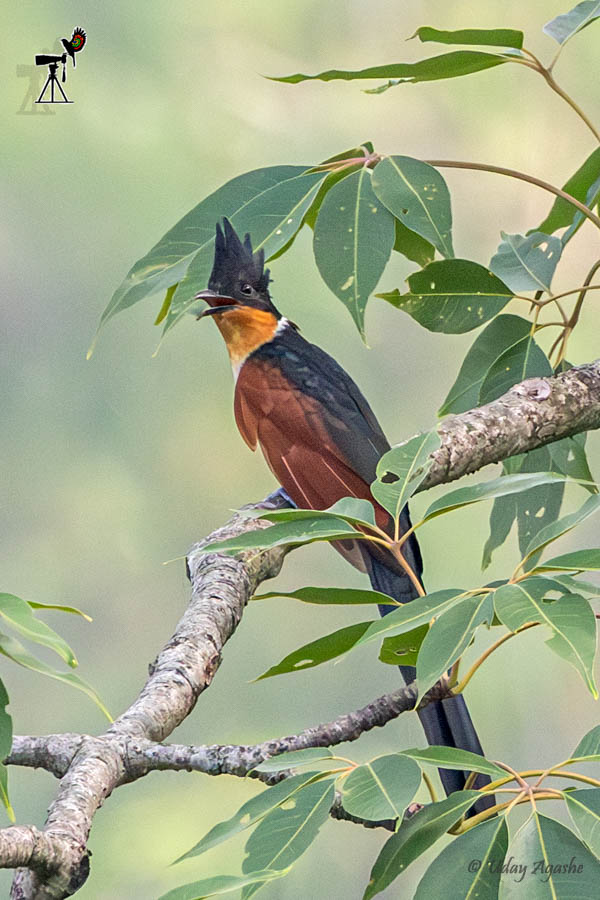
That ended our perfect birding session. Back at the homestay, our breakfast was ready. We quickly packed our bags and were out towards the Bagdogra Airport.
Mumbai Airport had a scheduled downtime (11 am to 5 pm) today due to scheduled pre-monsoon maintenance. That may have resulted in a delay of an hour plus there was a lot of chaos outside the airport for auto/cabs/private vehicles. Barring that, the return journey was peaceful and I was home for late dinner.
Summary
Overall a great birding trip. I managed to get 4 lifers taking my tally to 991. Got to see a different terrain, a different set of locals that we interacted with, and last but not least had great company of fellow birders.
Please note: For the blog, I have used some photos taken by my fellow trip-mates.